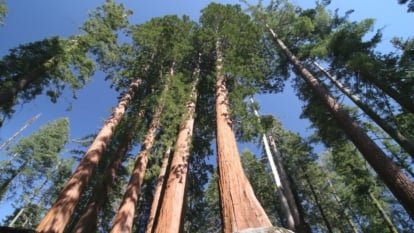Do you want to grow the tallest tree in the world? If you live between Central California and Southwestern Oregon, you can grow the iconic Coast Redwood tree in its native zone. Also known as California Redwood, these tremendously tall trees grow wild exclusively along the southern parts of the Pacific Northwest Coast. They rarely thrive more than 50 miles inland. However, the stately conifers can be cultivated in many locations around the world with some extra maintenance and modifications.
For example, California’s Coast Redwoods have successfully grown on plantations in New Zealand since the early 1900s. Even Hawaii has redwood forests on both Maui and Kauai, but the trees only grow successfully above 6,000 feet in this tropical zone. In colder and drier regions, the redwood cousin, Giant Sequoia—native to the Sierra Nevada Mountains—is a reliable option for a home landscape. This species can also be grown on the East Coast, but they tend to be much shorter.
Let’s dig in how to plant and care for your very own Coast Redwood. This tree easily out-lives your great grandchildren and acts like a living legacy of your love for gardening!
Overview
|
|
|
History and Cultivation
Crowned the tallest tree in the world, Coast Redwoods are a breathtaking sight to behold. People from all over the globe trek to Northern California to experience the last of wild old-growth redwood forests. These one-of-a-kind conifers grow up to 300 feet tall and can live to be 3,000 years old or more. Only about 5% of the original redwoods remain in the world, but you can play a role in keeping this ancient species alive by planting it in your landscape.
Fortunately, this tree doesn’t only grow in its native range. Sequoia sempervirens can be cultivated as a landscape tree in many other places. With proper moisture, temperature, and soil, the seedlings grow into magnificent ornamental specimens in a variety of climates. The species is also one of the fastest-growing trees, averaging a whopping 3 to 10 feet per year!
What is a Coast Redwood?
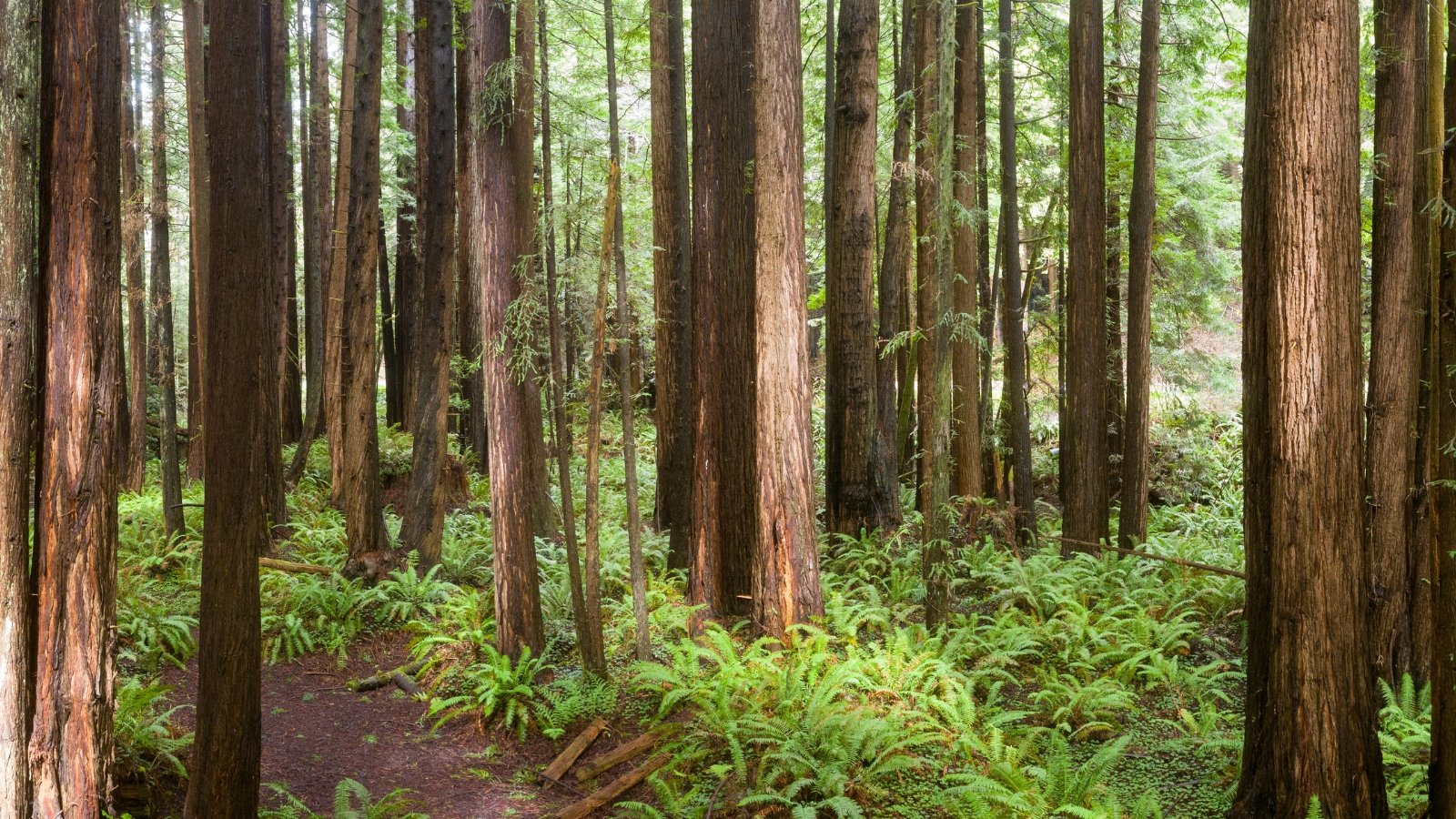
Coast Redwood, or California Redwood, is botanically known as Sequoia sempervirens. It is the tallest tree in the world, reaching up to 300 feet tall. One of the fastest-growing conifers, Coast Redwood is native to a limited range on the foggy Pacific Northwest coast, but it can be cultivated in other areas.
These fire-resistant, tannin-rich, ultra-resilient trees have been around since the age of the dinosaurs. They have significant ecological value, and redwood forests even create their own weather patterns!
Are Redwoods the Tallest Trees in the World?
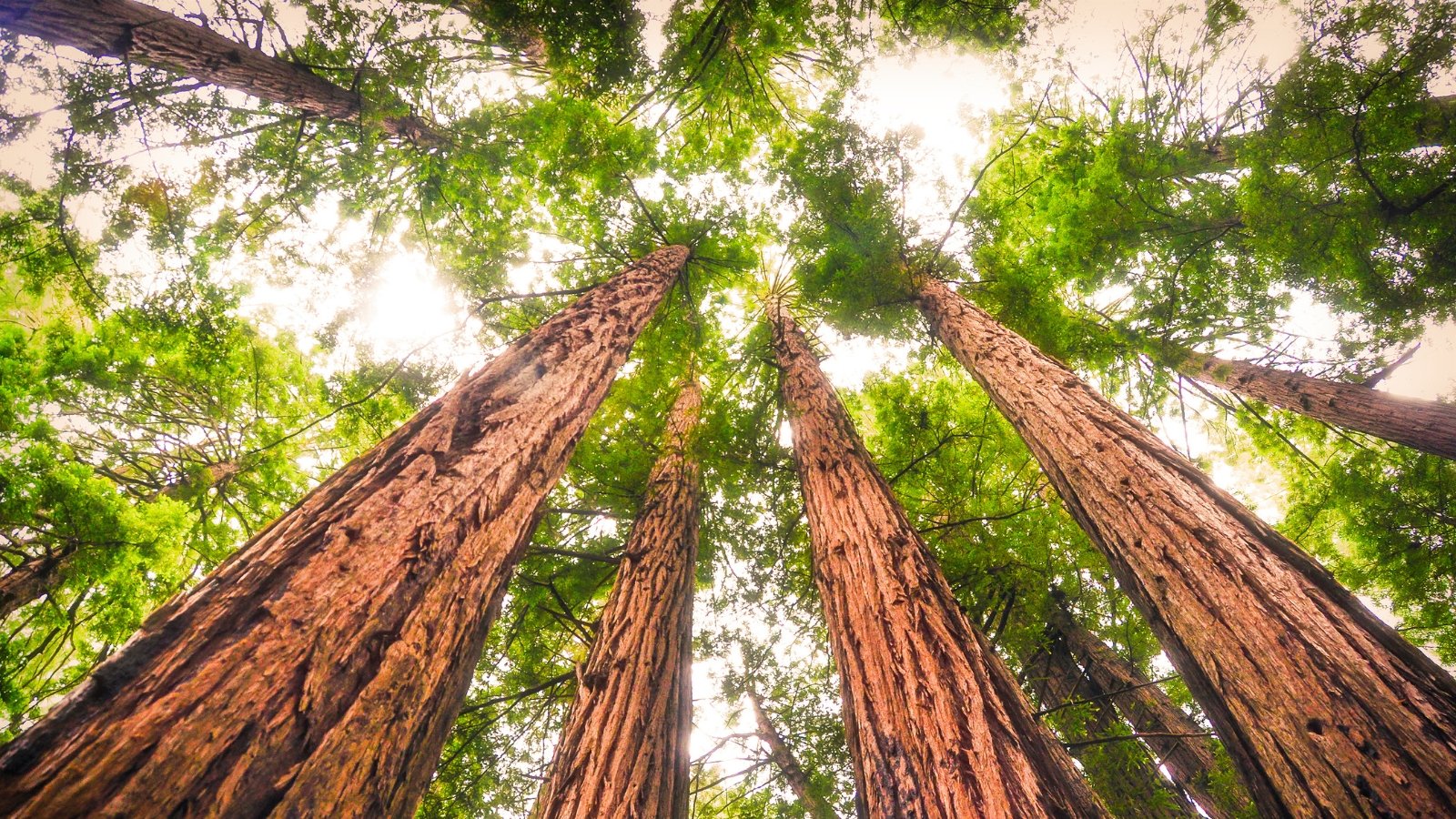
Sequoia sempervirens, or the Coast Redwood, is the tallest recorded tree on the planet, reaching heights up to 300 feet. For comparison, the tallest pine tree is about 260 feet, and the tallest tanoak is 160 feet.
A redwood relative, the Giant Sequoia or Sequoiadendron giganteum is the largest tree in the world by volume, but they don’t grow quite as tall as Coast Redwoods. Both species can live to be thousands of years old. They are endemic to California and a small portion of Southern Oregon.
Can You Grow a Redwood in Your Garden?
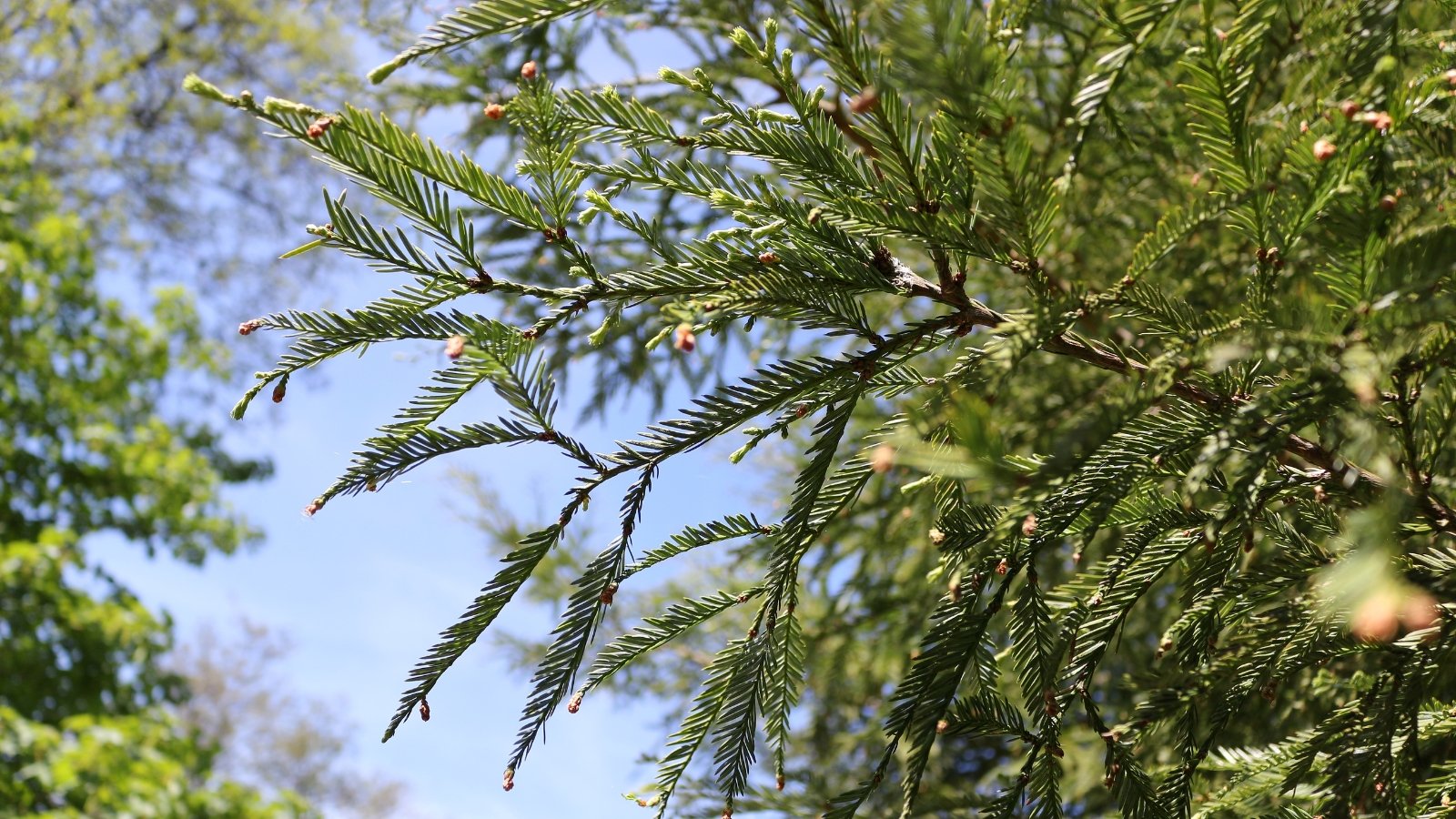
It is perfectly legal to grow a redwood in your garden, but it is illegal to cut down, dig up, or propagate a wild protected tree. Instead, you must propagate redwoods from seeds or nursery stock. It is important to match the right species to your climate or make significant modifications to keep the tree alive outside of its native California range:
- Coast Redwoods are very picky about their environment, requiring lots of humid or foggy air, moist but well-drained soils, and mild temperatures between 30-70°F (-1 to 21°C).
- Dawn Redwoods, native to China, are more flexible and desirable for ornamental use.
- Giant Sequoias are ideal for dryer, colder regions, and low-elevation mountains.
Propagation
This coniferous (cone-bearing) tree can be propagated by seed, cutting, or sucker shoots. The seeds tend to have low germination rates, so vegetative propagation is the most common. You can also find varieties of Sequoia sempervirens seedlings at ornamental tree nurseries.
If you want to get the largest tree possible in a short amount of time, purchase an established redwood from a tree nursery. Most propagation methods take one to three years to produce saplings large enough to plant in the ground.
Seeds
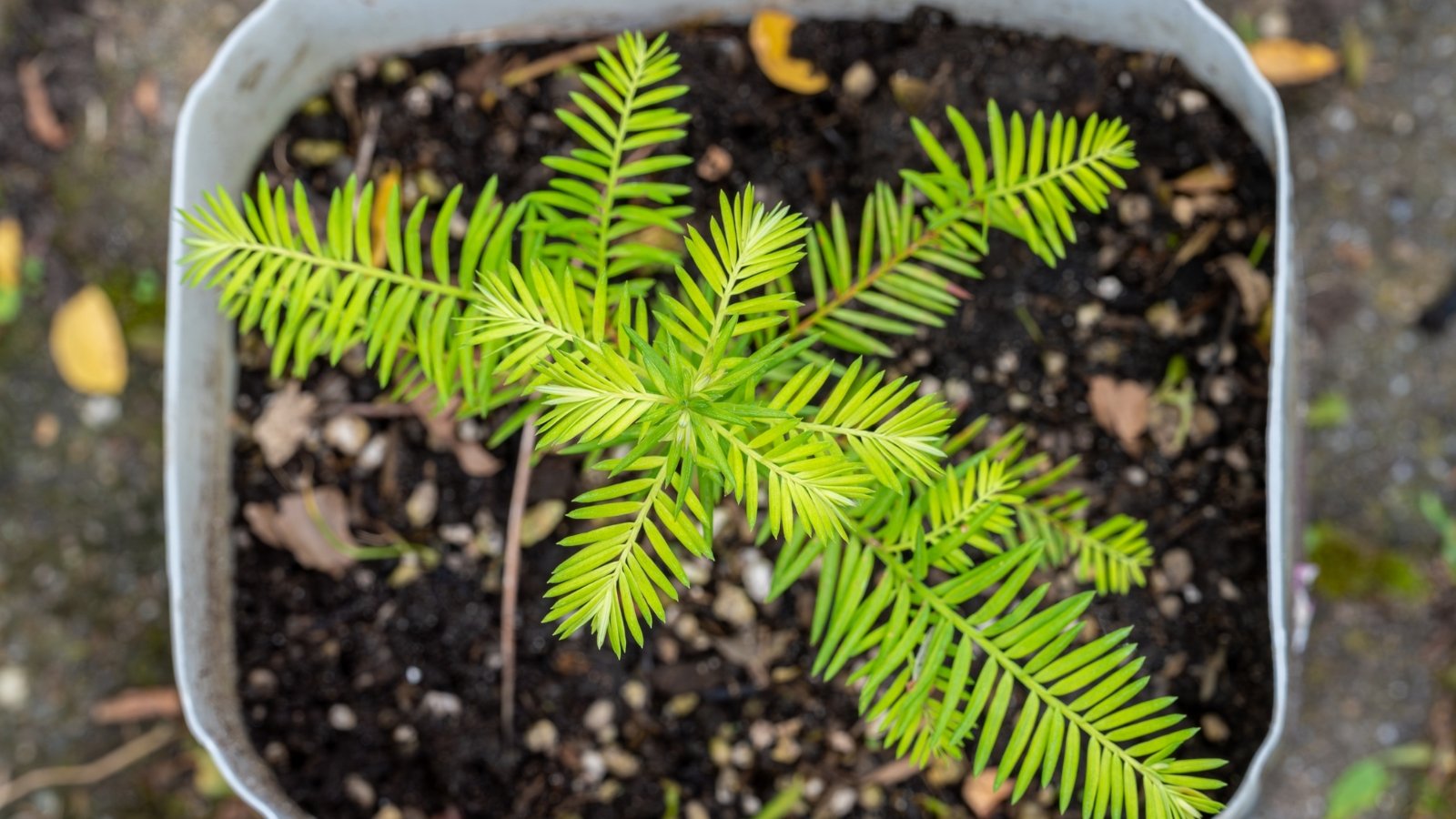
Growing from seed is a great way to enhance the genetic diversity of redwoods. However, it is not recommended for home gardeners who want a reliable sapling to grow as a shade tree. If you’re growing for ornamental purposes, it is much easier to start with cuttings or established saplings from a nursery. Seed propagation is usually reserved for redwood nerds who are invested in learning about the species.
A mature redwood tree can produce up to 100,000 seeds per year, but only about 1 in every 12 seeds is viable. This means the germination rate is very low, and you must plant a lot of seeds to ensure success. To make matters more complicated, most of the seeds are released before the cones fall to the ground. So, if you collect cones from a wild redwood forest, they likely have already lost their seeds unless a squirrel or storm dropped the seed-filled cone to the ground prematurely.
Collecting Seeds
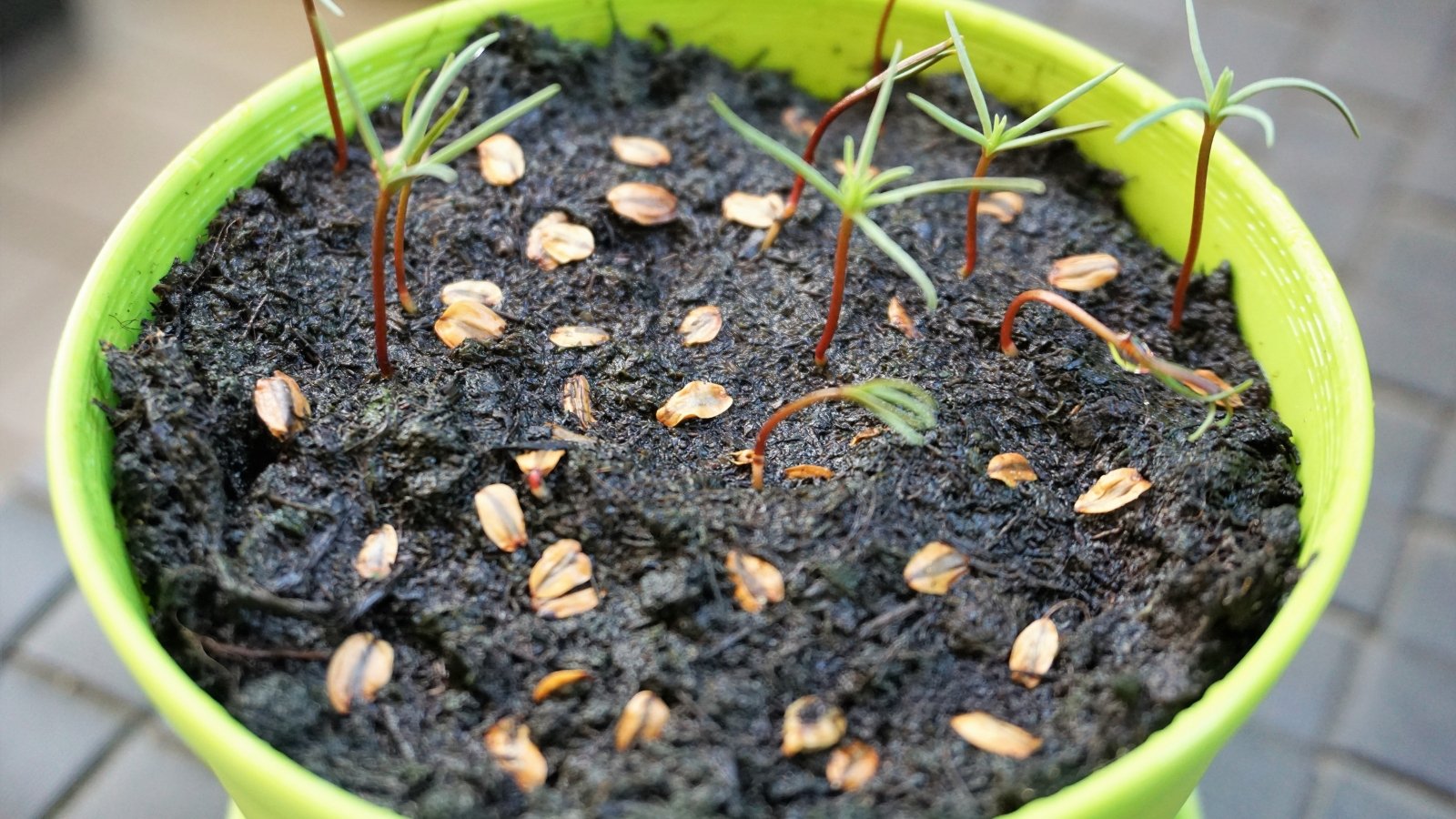
So how does one acquire viable seeds? You can purchase redwood tree seeds online or collect them from a mature forest after a major rainstorm. The best time to find redwood seeds is in November and December after a heavy rain. The wind of a storm gives you the best chance to find fallen cones that still have their seeds.
Be sure you have permission to collect cones from the area! The U.S. Forest Service allows small quantities of green cones to be collected as long as they are below Incidental Use thresholds.
Sowing Redwood Seeds
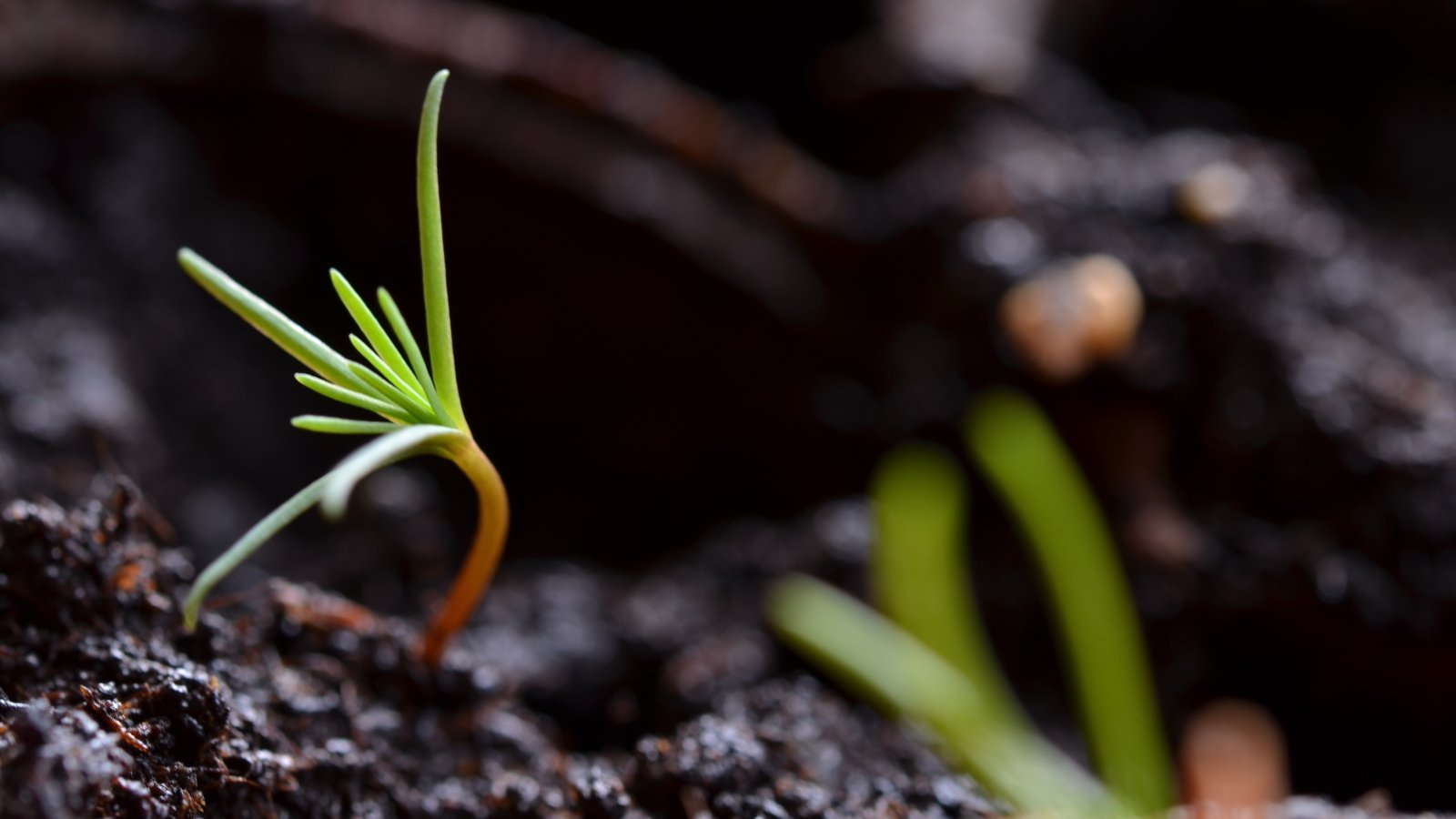
The tiny seeds are about the size of a tomato seed. They must be cold stratified (refrigerated for 20-30 days) to mimic the cold exposure of a natural winter outdoors. It’s best to collect all the cones, place them in a bag or box, and shake them to release the seeds.
Move the mix into a ziplock bag with a moist perlite or coco coir blend. The bag should be sealed and occasionally misted with water to ensure it doesn’t dry out.
To plant them:
- Prepare a 6” deep flat or several 4” pots with a blend of potting mix.
- When filling, leave about ½” of space on top.
- Restoration groups recommend 50% organic topsoil, 25% perlite, 20% coco coir, 3% compost, 1% mycorrhizal fertilizer blend, and 1% organic acid fertilizer mix.
- Remove the bags of cones from your refrigerator.
- Twist each cone to open it and take out the seeds. There can be 80-100 seeds per cone.
- Sprinkle seeds over the soil surface.
- You can plant up to 12 seeds every 3 square inches. Germination rates are very low.
- Lightly dust over the top with a ⅛” thick layer of soil.
- Cover with a layer of perlite to prevent damping off disease.
- Place the seed trays in an area with full sunlight, above 45°F (7°C), such as a greenhouse or low tunnel.
- Keep the soil moist but not soggy.
- Wait about one month for germination.
- Grow seedlings at temperatures between 45 and 70°F (7-21°C), keeping them partially shaded during hot summers.
The saplings are usually ready to transplant into larger pots in about three months. Check that the seedling roots have filled the pot. Move to a tree pot or a larger container, or plant directly in the ground after about one year of growth. Take care to ensure that the seedling is buried at the same soil level. It should not be planted any deeper or shallower.
Cuttings
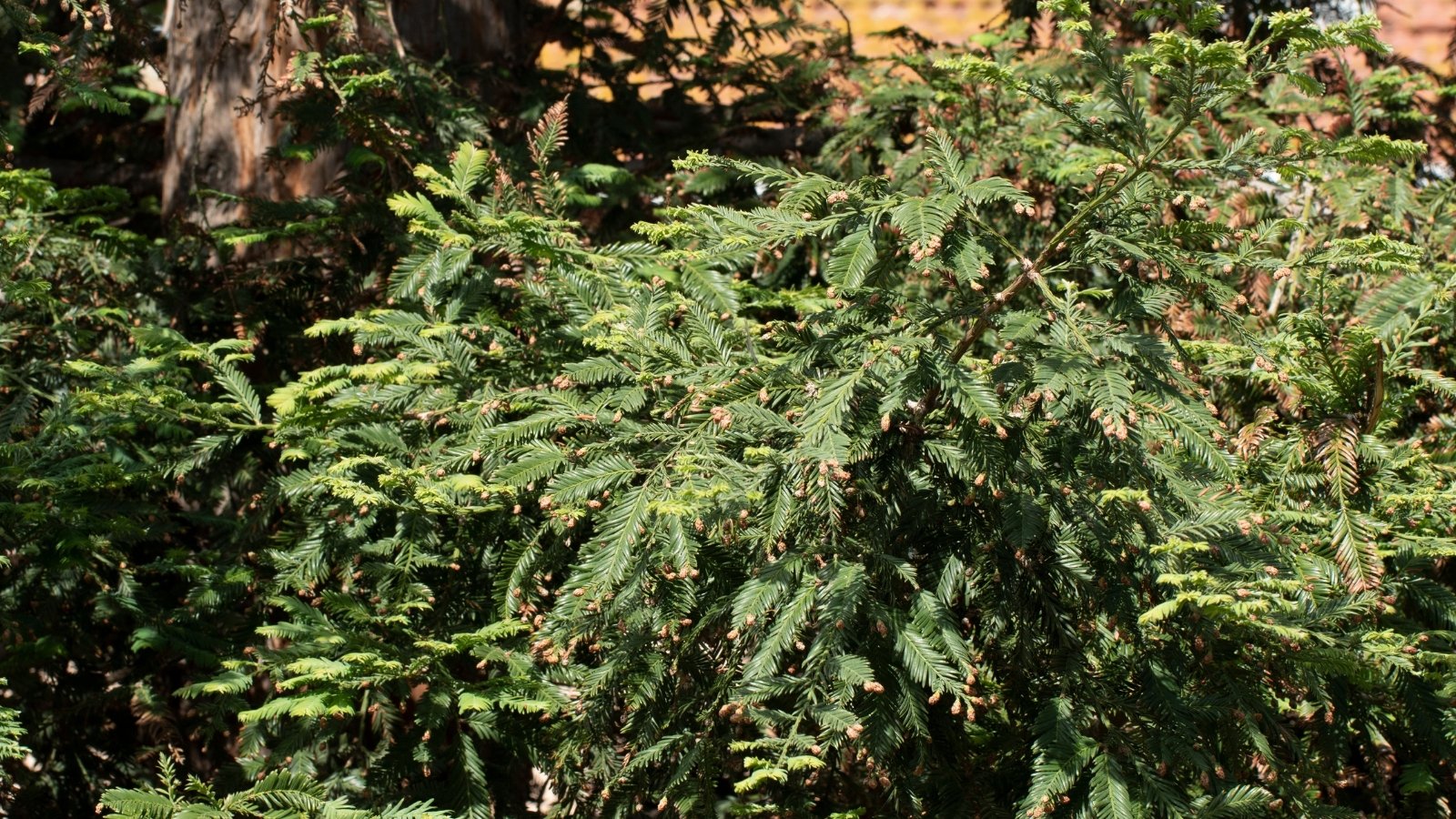
Growing redwoods from cuttings is faster and often more successful than growing from seed. The plants start with more growth than seedlings and take an average of two to three years to be ready to plant outdoors.
However, cuttings are a form of vegetative (clonal) propagation that does not offer the genetic diversity of sexual (seed) propagation. Still, this method is most desirable for home gardeners and tree nurseries because you can guarantee you will have the same genetics as the mother redwood.
Here’s how to take cuttings and root them to grow new saplings:
- Find a mature redwood tree with fresh spring growth or sucker shoots growing from the base (explained below).
- The branch should be green and flexible with new leaves. Avoid woody twigs.
- Use sharp, sanitized shears to take a cutting or sprout 12-18” long.
- Remove the lower branchlets to expose a few nodes.
- A node is a bump where each side branchlet grows from the stem.
- Peel or cut the bottom of the cuttings to expose the cambium (outer layer of skin just below the bark).
- Dip the bottom inches of the cutting into a rooting hormone.
- Fill deep cell trays (such as tree pots) with a blend of ½ peat moss and ½ perlite.
- Use a dowel to make a large hole in the center of each pot.
- Gently push the cutting all the way to the bottom of the pot, ensuring no leaves are buried.
- Backfill the soil to “tuck in” the cutting.
- Keep consistently moist but never soggy.
- Place in an area with partial sunlight and temperatures between 45 and 75°F (7-24°C).
Cuttings can start rooting within six months to a year. The saplings aren’t typically ready to transplant for another two to three years. Fortunately, not much maintenance is required for these baby trees. As long as they are moist and above freezing, they should take care of themselves.
Sucker Shoots
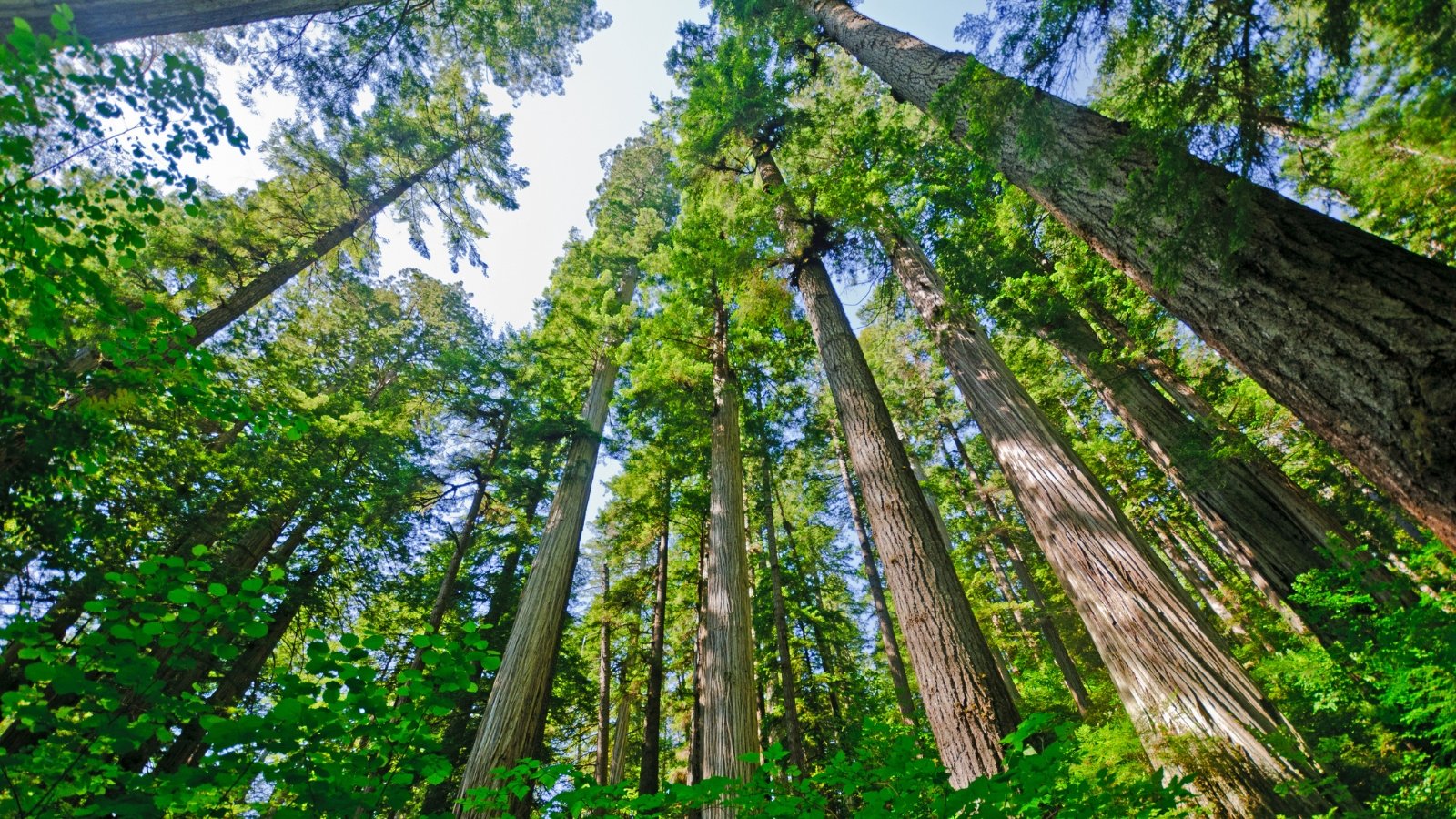
Have you heard of redwood fairy rings? One of the most unique things about this tree is its ability to grow in family groups. The shallow, wide-spreading roots intertwine with the roots of other trees around them. When an old tree dies, the mother tree sends up sprouts from its roots to grow new saplings. These basal sprouts can be found along cut stumps, fallen logs, or expansive redwood root zones. The ability to sprout from the base is very rare in conifer trees.
These “sucker shoots” or “stump shoots” are typically found growing in circles around the central stump, hence the nickname “fairy rings.” Scientists used to think that all the shoots in a fairy ring were genetically identical clones, but recent evidence shows that multiple genetics can be intermingled in the circle. Even after the parent tree dies, the young redwoods continue to grow in a circle to stabilize and nourish each other.
Propagating From Basal Sprouts
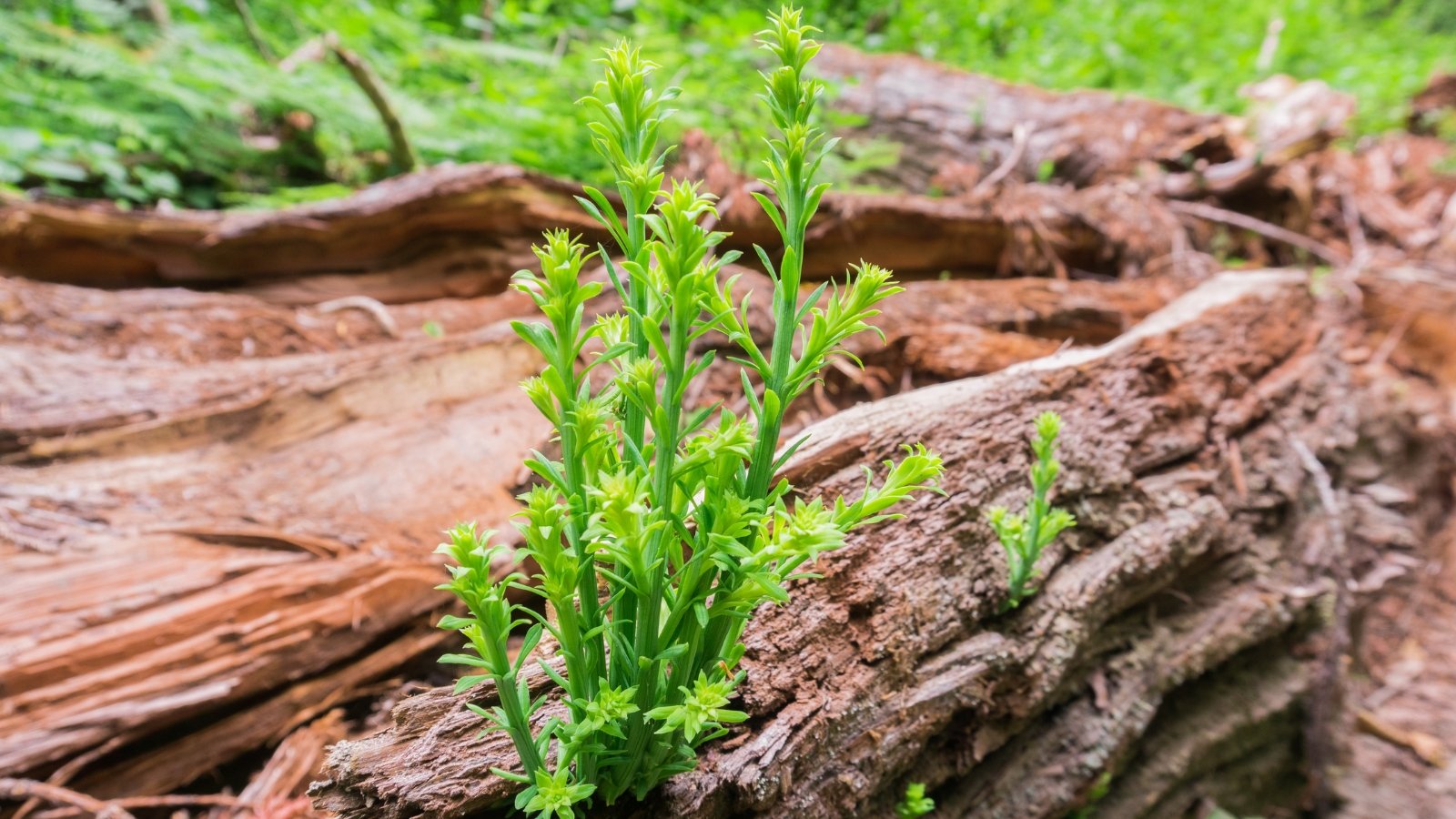
The only reliable and legal way to propagate sucker shoots is from a mature suckering tree or a fairy ring on your own property or in a neighbor’s yard (with permission). It is illegal to dig up or cut any portion of a wild redwood tree because it is a protected species.
The main benefit of propagating by sucker is extremely rapid growth, growing up to 8-10 feet in the first year thanks to nourishment from the parent roots. However, this only works if the sucker has a strong network of fine roots that can be dug up.
To propagate from sucker sprouts:
- Find a mature or fallen redwood tree with new sprouts growing from the base.
- Look for signs of fine surface roots.
- If there aren’t any visible roots, you can propagate the shoots as cuttings.
- Use a shovel to gently dig around the circumference of the shoot.
- Lift it from the ground, ensuring a strong root ball.
- Transplant the sapling to a partially sunny area at least 7-15 feet from the parent tree.
Another option is to leave the shoots to grow naturally from a withered stump.
Planting
Transplanting a Coast Redwood is similar to planting other types of trees. If you don’t live in the species’ native growing zone, it is important to amend the soil to ensure proper drainage. Generally, a tree needs at least two or three years of growth (from seed) to be ready to plant outdoors. But if you purchase an established potted tree or bare root specimen, you can plant it right away.
How to Transplant
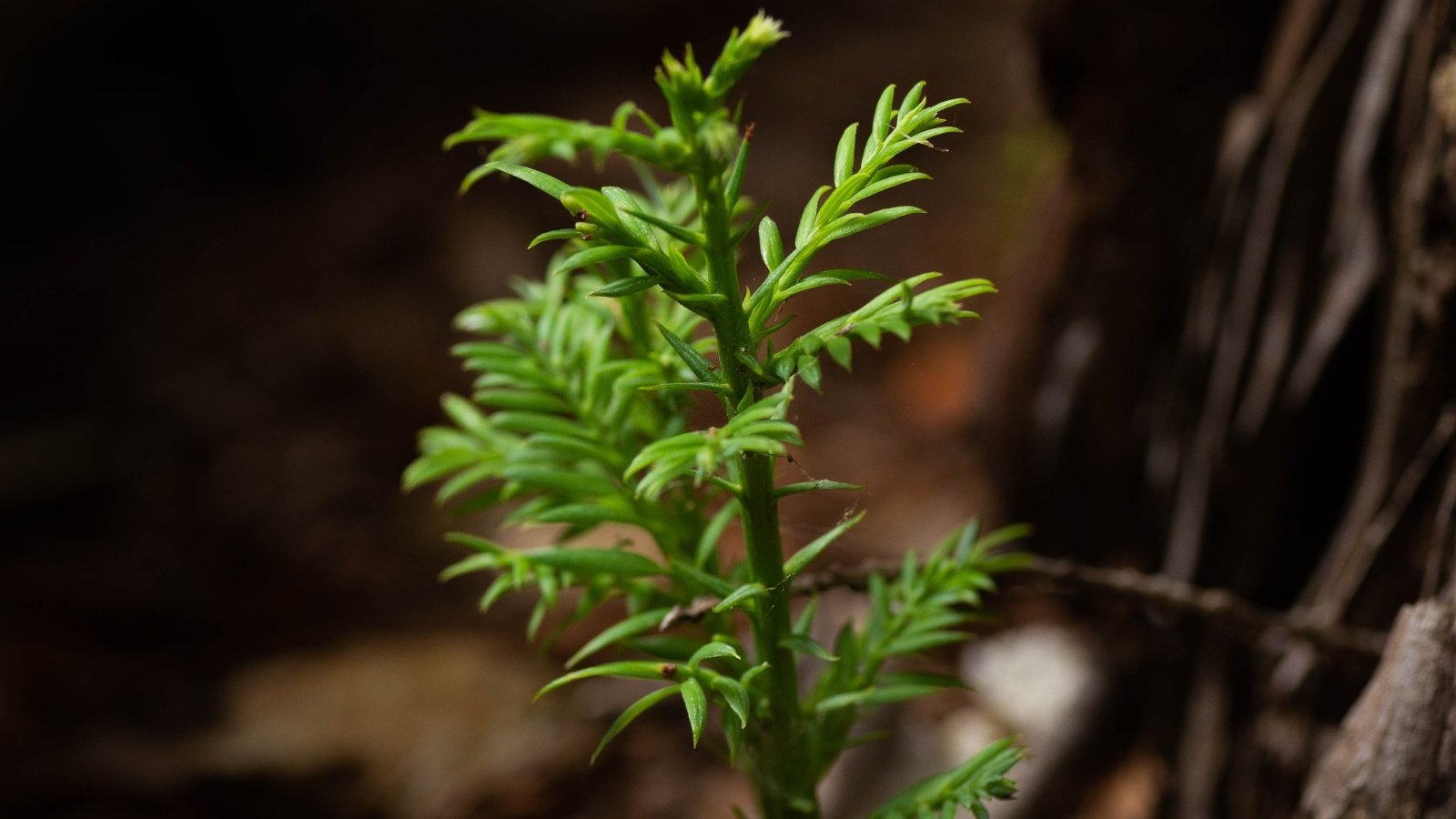
Find an area with full sun (in mild climates) or partial shade (in hotter climates). Dig a hole twice as wide and deep as the sapling’s root ball. If the soil is compacted or high in clay content, use a shovel to loosen the edges of the hole and blend in coco coir, peat moss, compost, or native sandy soil. Avoid manure or fertilizer-amended potting mixes, as these can burn the roots of this nutrient-sensitive tree. You also need to ensure that the soil is the right pH, around 5.5 to 6.0.
To plant:
- Transplant in spring after the risk of frost has passed. Ideally, grow this tree in zones 7-9.
Ensure the root ball is strong, and the sapling is at least 2-3 feet tall. - Grasp the base of the tree and loosen from the container.
- Place the root ball in the hole at the same depth as it was in its pot.
- Backfill with soil, lightly pressing to “tuck in” the roots.
- Water generously to help the plant get established.
- Add a thick layer of mulch, preferably fallen needles from neighboring redwoods.
Redwoods are very social trees, and they appreciate growing near their own kind. If you can’t plant multiple trees, it helps to bring in the fallen needles and branches to use as mulch.
Spacing
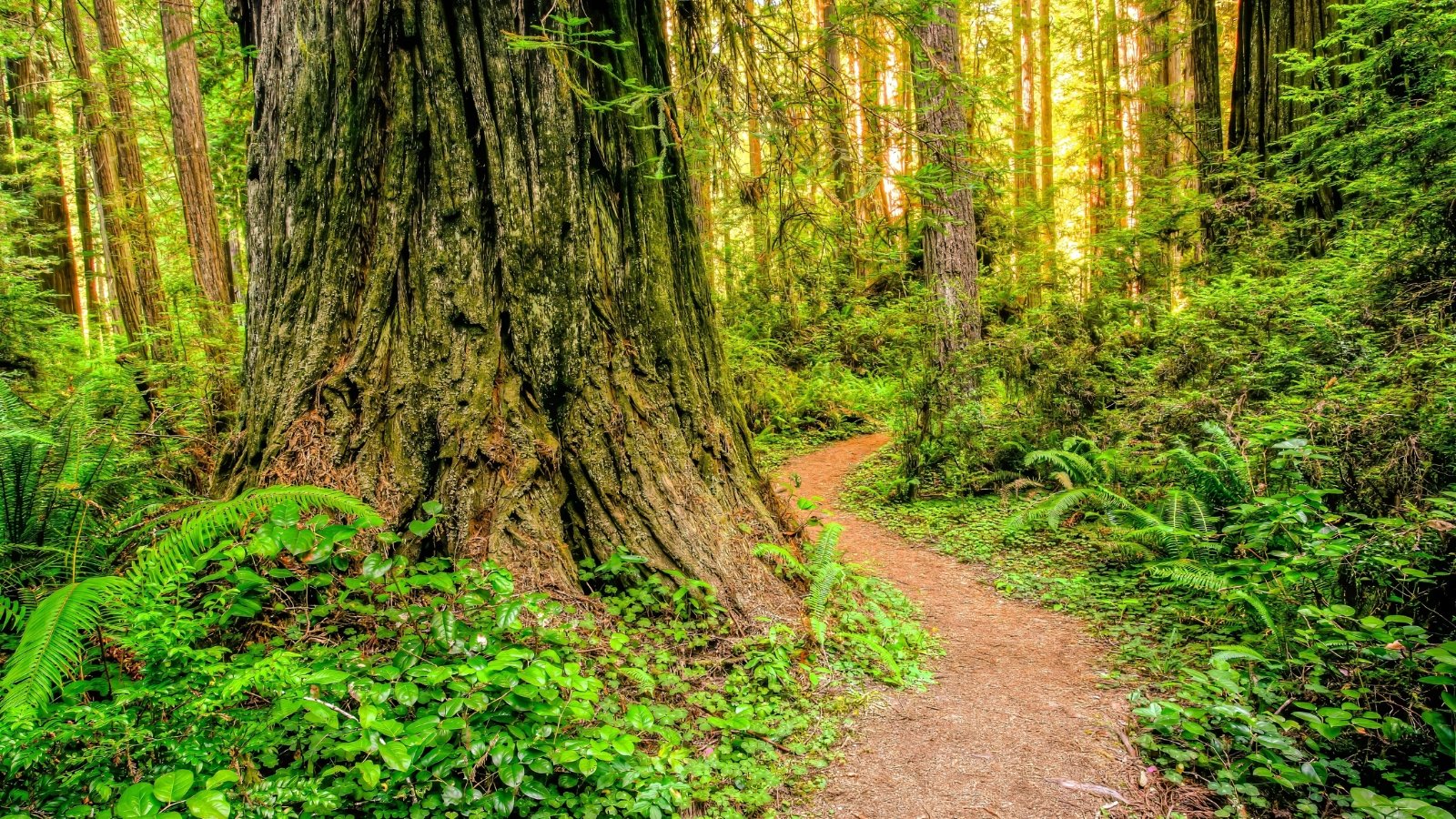
Redwoods can be grown as large shade trees or as closely planted hedgerows. Of course, closer spacing to form a hedge will result in smaller trees. If you want this species to grow to its fullest height and glory, it will need at least 20-40 feet of space from buildings and other trees.
The general redwood spacing recommendation is:
- Large Single Shade Tree: 20-40 feet
- Circle or Grove Spacing: 7 feet apart
- Hedges: 3-4 feet apart
Remember that redwood roots can spread 60-80 feet horizontally, often intertwining with the roots of neighboring redwoods for stability. If you are growing near your home, plant away from the foundation of your house to avoid root damage.
How to Grow
Growing Sequoia sempervirens can be challenging but rewarding. The tallest tree in the world can grow up to 150 feet tall in your lifetime, but it needs specific requirements to protect it from harsh conditions.
Light
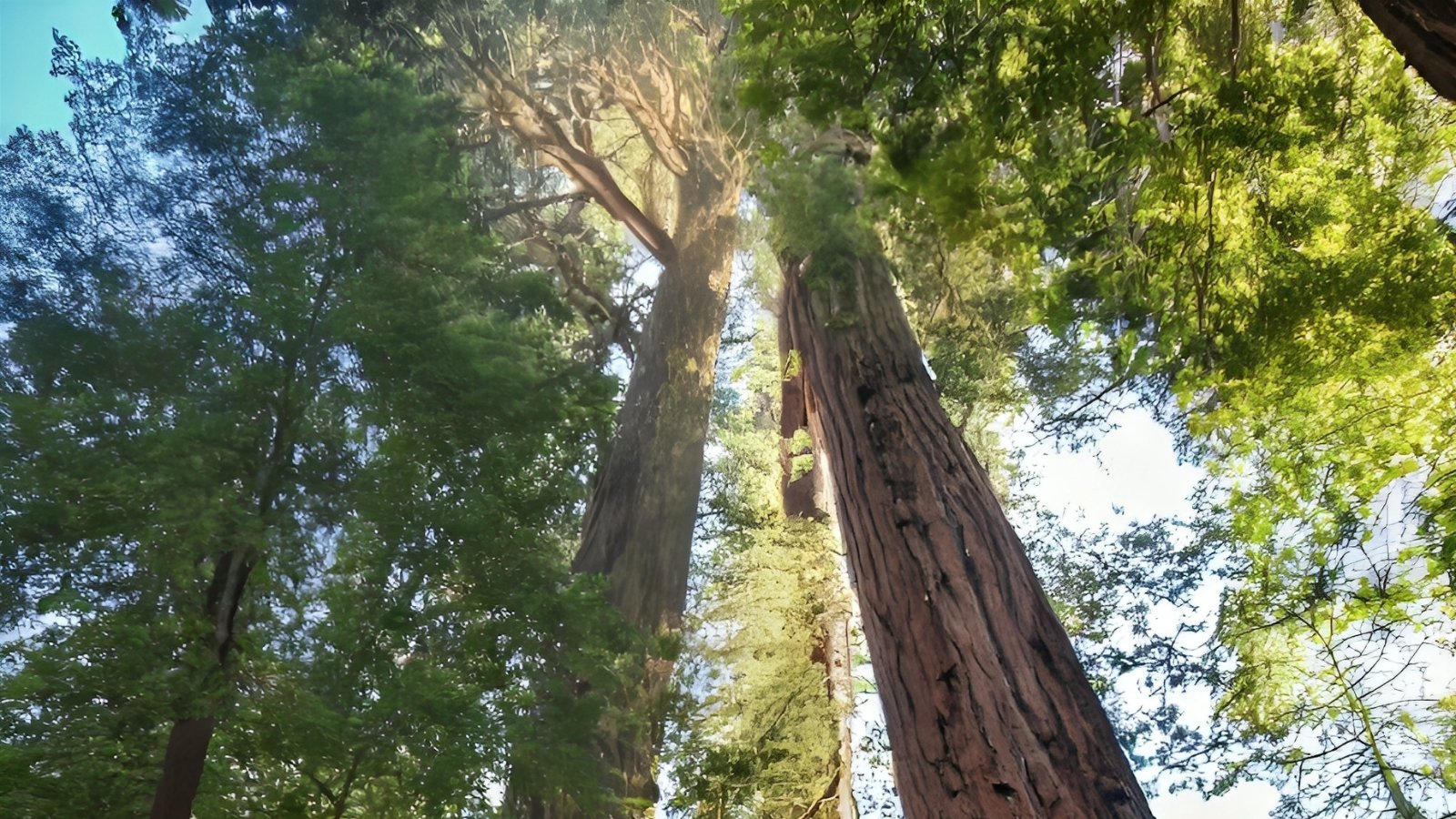
Full sun to partial shade is necessary for this tree to thrive. At least six hours of direct light per day is necessary. Young trees are accustomed to less sunlight while developing on the forest floor under the canopy of larger individuals. Once the trees reach 10-20 feet tall, they prefer more sunshine.
In warmer climates like zone 9, redwoods appreciate afternoon shade. This fragile species is not adapted to intense heat. In fact, wild redwoods form their own “fog belt” of cloudy weather over their forests, keeping them cool and moist for most of the year.
Water
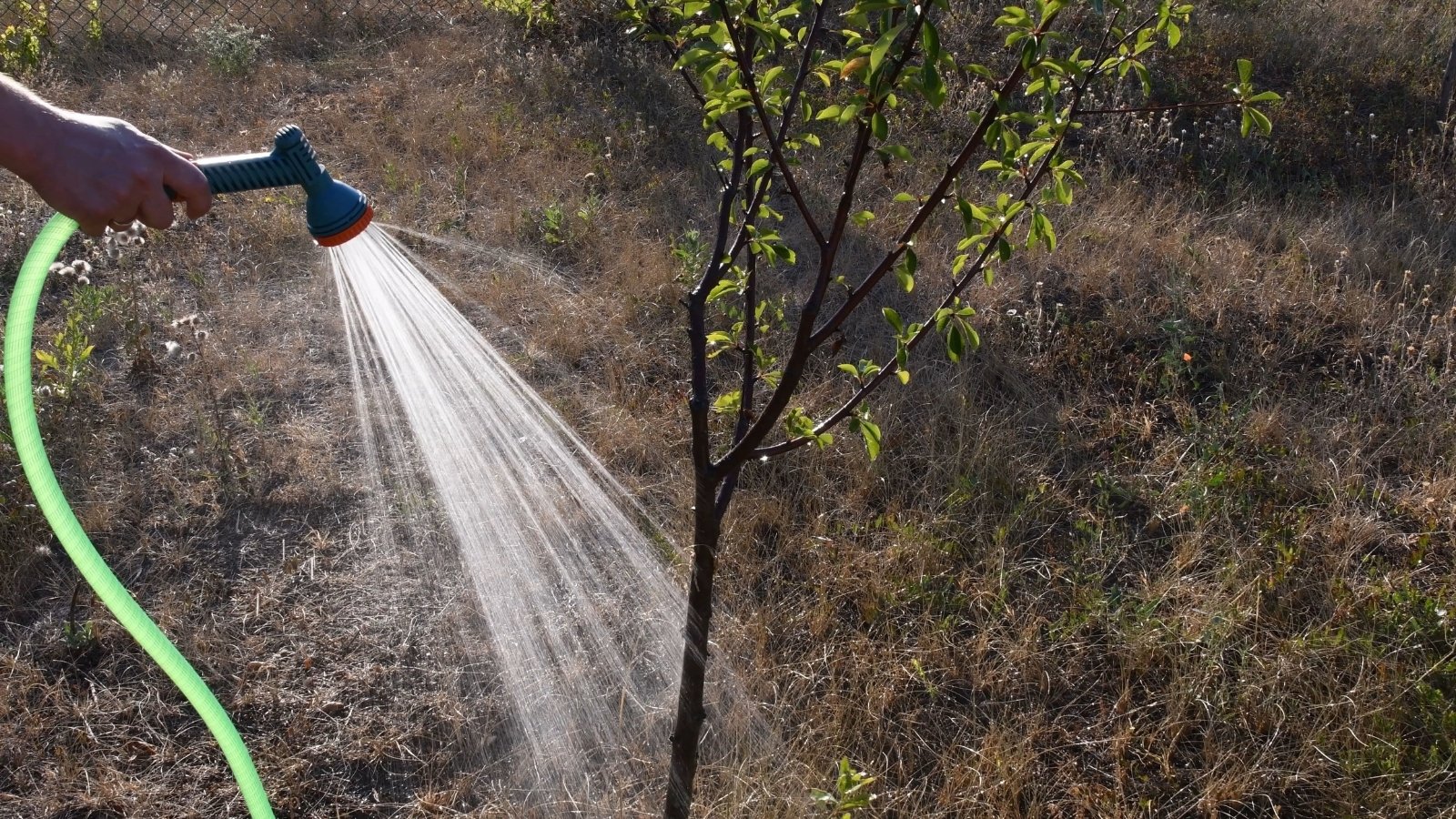
Ample water is necessary for a healthy redwood. These trees are particularly thirsty during establishment. The soil must remain consistently moist yet never soggy or waterlogged. It is important to check the trees regularly during dry spells. Saplings growing in tree pots or containers are especially vulnerable to drying out.
Add mulch around the base of the tree to retain soil moisture. You can use fallen redwood or fir needles as mulch to mimic the natural forest environment.
Soil
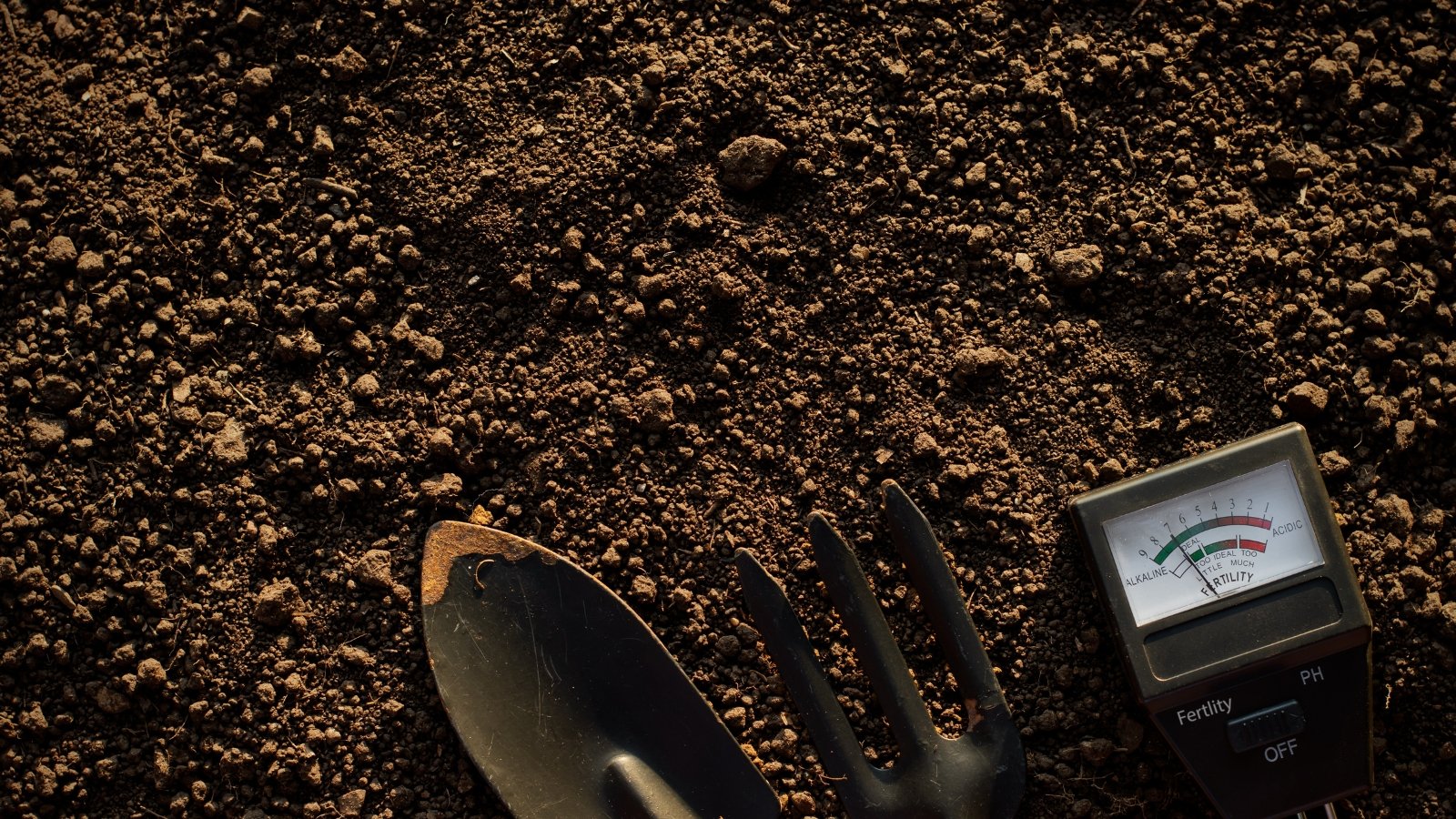
This tree prefers well-drained, acidic soil that is rich in organic matter. The ideal pH is 5.5 to 6.5, and they can suffer in overly alkaline soils. Amending with peat moss or compost can improve drainage and pH.
However, never use manure-based compost on these trees. They are very sensitive to excessive nutrients. The trees naturally form symbiotic relationships with fungi in the soil to supply the bulk of their mineral needs.
Climate and Temperature
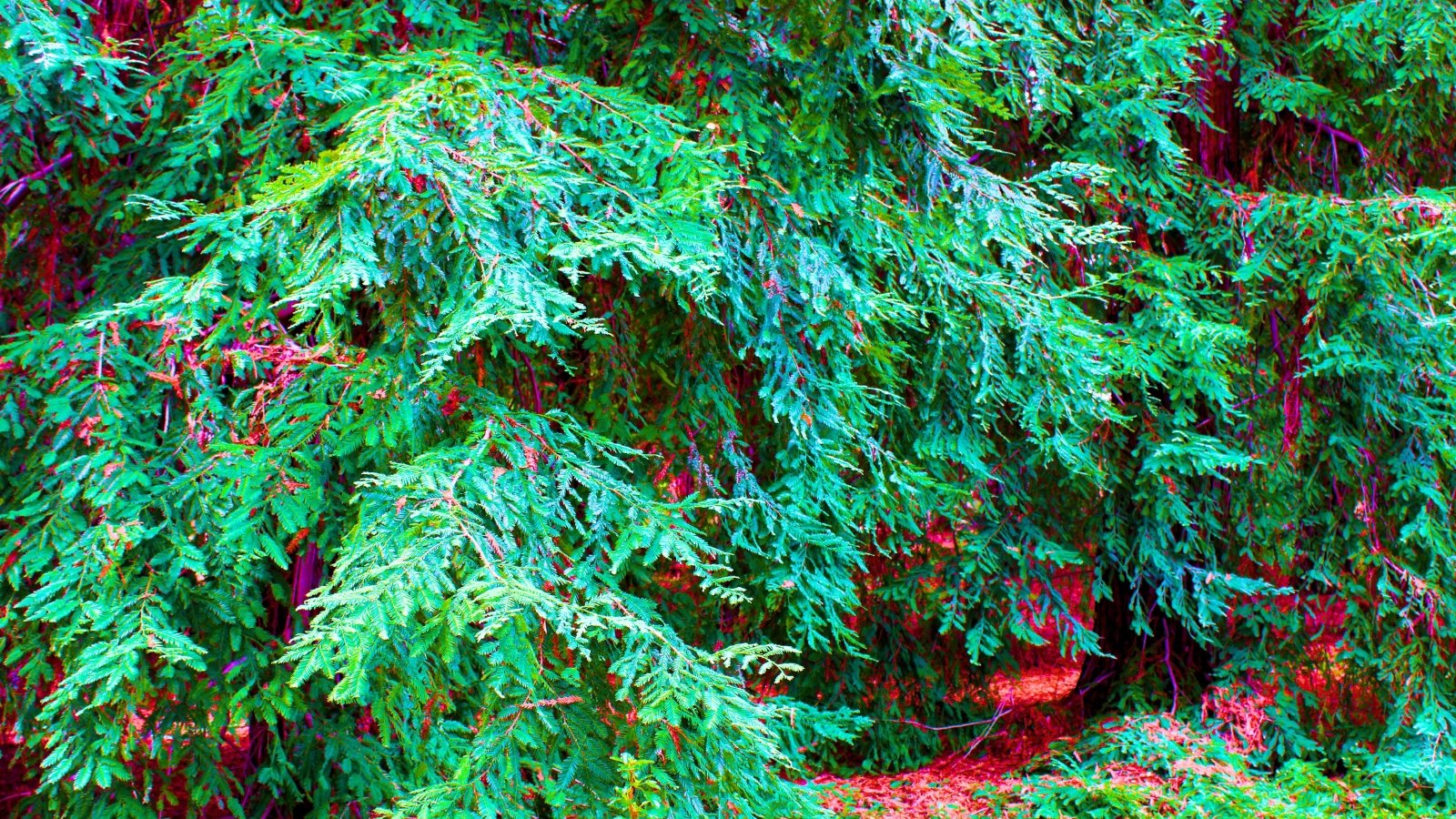
Coast Redwoods evolved on the coast, meaning they thrive in a mild maritime climate. Moist, cool conditions are ideal. They like moderate temperatures (not too cold, not too hot) and high humidity. If you have ever visited Mendocino, Eureka, or Arcata on the coast of California, this is the prime environment for redwoods.
Temperatures between 45 and 70°F (7-21°C) are ideal, though they can handle slightly hotter and slightly colder. The trees may turn brown or unsightly if they are exposed to harsh conditions. They are particularly vulnerable to low-humidity regions because their leaves are adapted to absorb fog condensation during the night, enhancing overall humidity in their canopy. If the air lacks humidity, the trees may not get sufficient moisture from their roots alone.
If you live in an extremely frigid environment, you must grow Dawn Redwoods. Opt for a Giant Sequoia ff you live in a dryer, hotter area.
Fertilizing
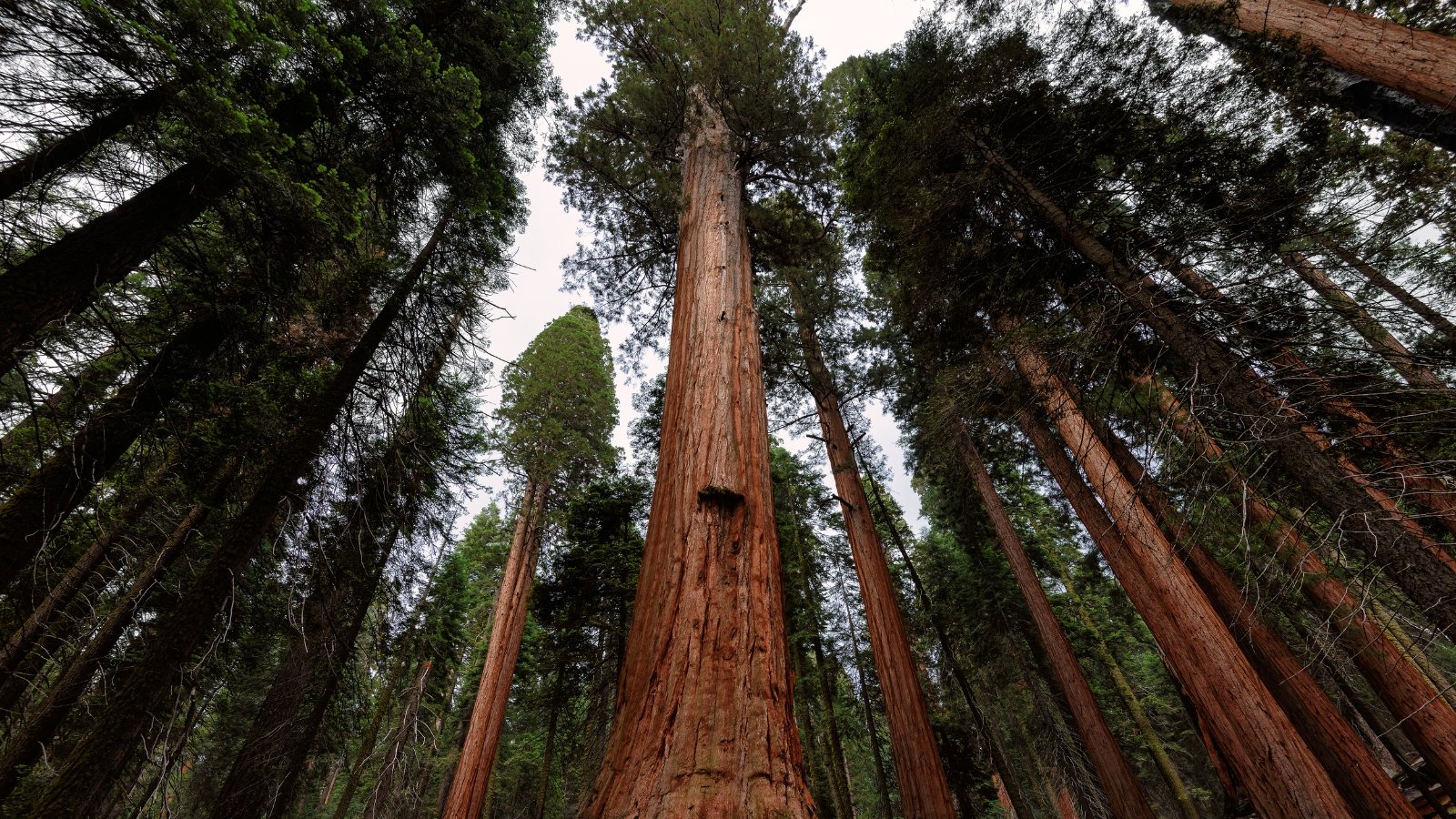
Do not fertilize these trees. It is especially important to avoid high-nitrogen fertilizers that may burn the roots. Instead, allow the foliage to drop and fertilize the soil around the tree.
Maintenance
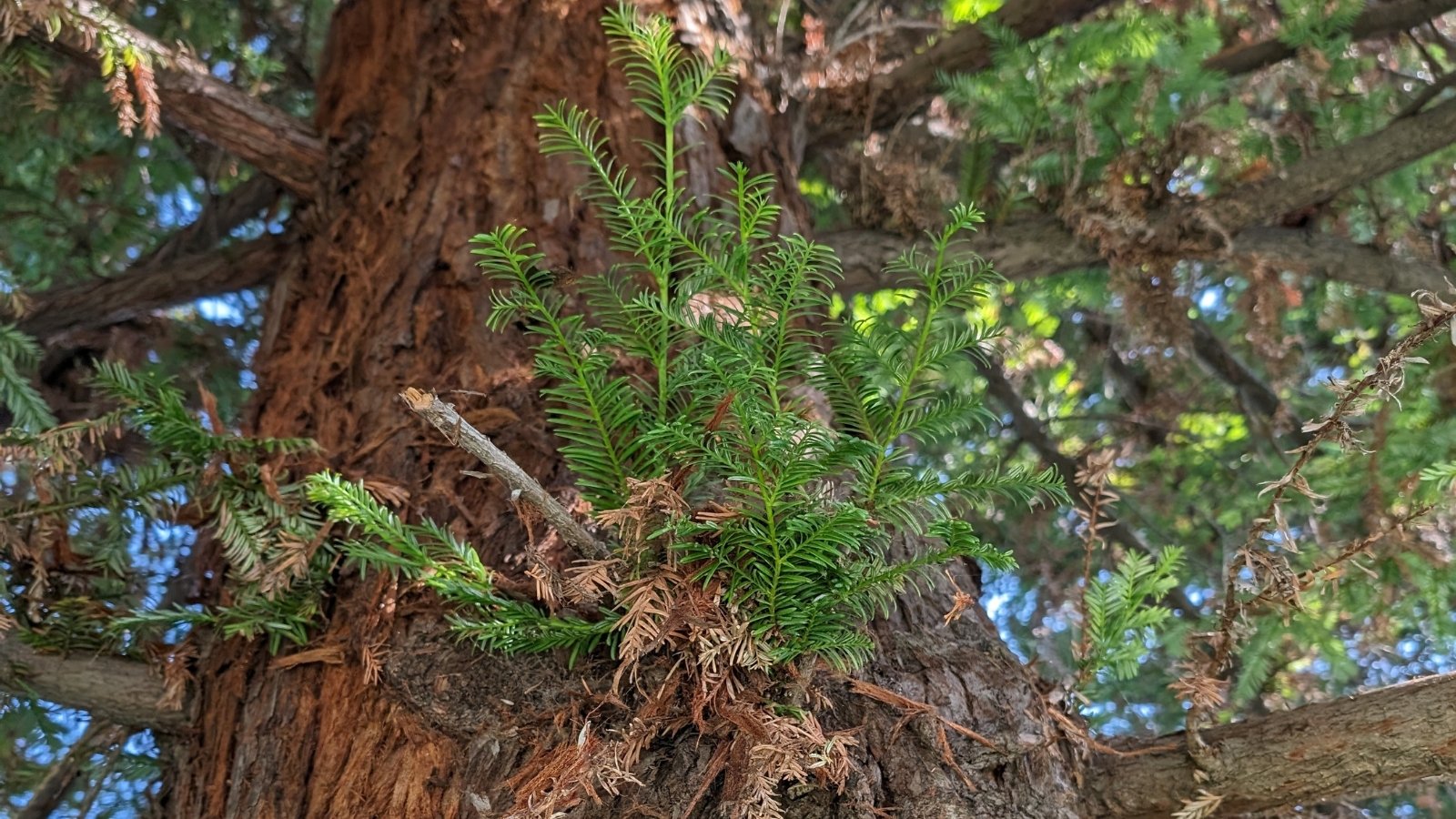
Once established in the right environment, this endangered species does not require much maintenance. Watering is the most major need. Minimal pruning is necessary. It’s only recommended to remove dead or damaged branches as needed. If you want a large specimen tree, you may wish to prune the side shoots of young saplings to encourage strong upward growth.
A thick layer of mulch around the base of the tree is very helpful for moisture retention and weed suppression. Mulch also helps buffer the soil against large temperature swings when growing this tree in areas outside of its native range.
Young trees may need a stake or support in windy areas.
Varieties
There are three main species of redwoods in the world:
- Coast Redwood (Sequoia sempervirens): Best for coastal applications in its native zone.
- Giant Sequoia (Sequoiadendron giganteum): Best for dryer, mild mountain zones.
- Dawn Redwood (Metasequoia glyptostroboides): Most versatile for landscape use and can survive frigid areas.
The Coast Redwood is the most finicky and picky about its environment, especially since these trees evolved under the “fog belt” of the Northern California and Southern Oregon coast. Giant Sequoias are better suited to low-elevation mountains with dryer air. Dawn Redwoods can handle colder areas.
What is the Difference Between Coast Redwood and Giant Sequoia?
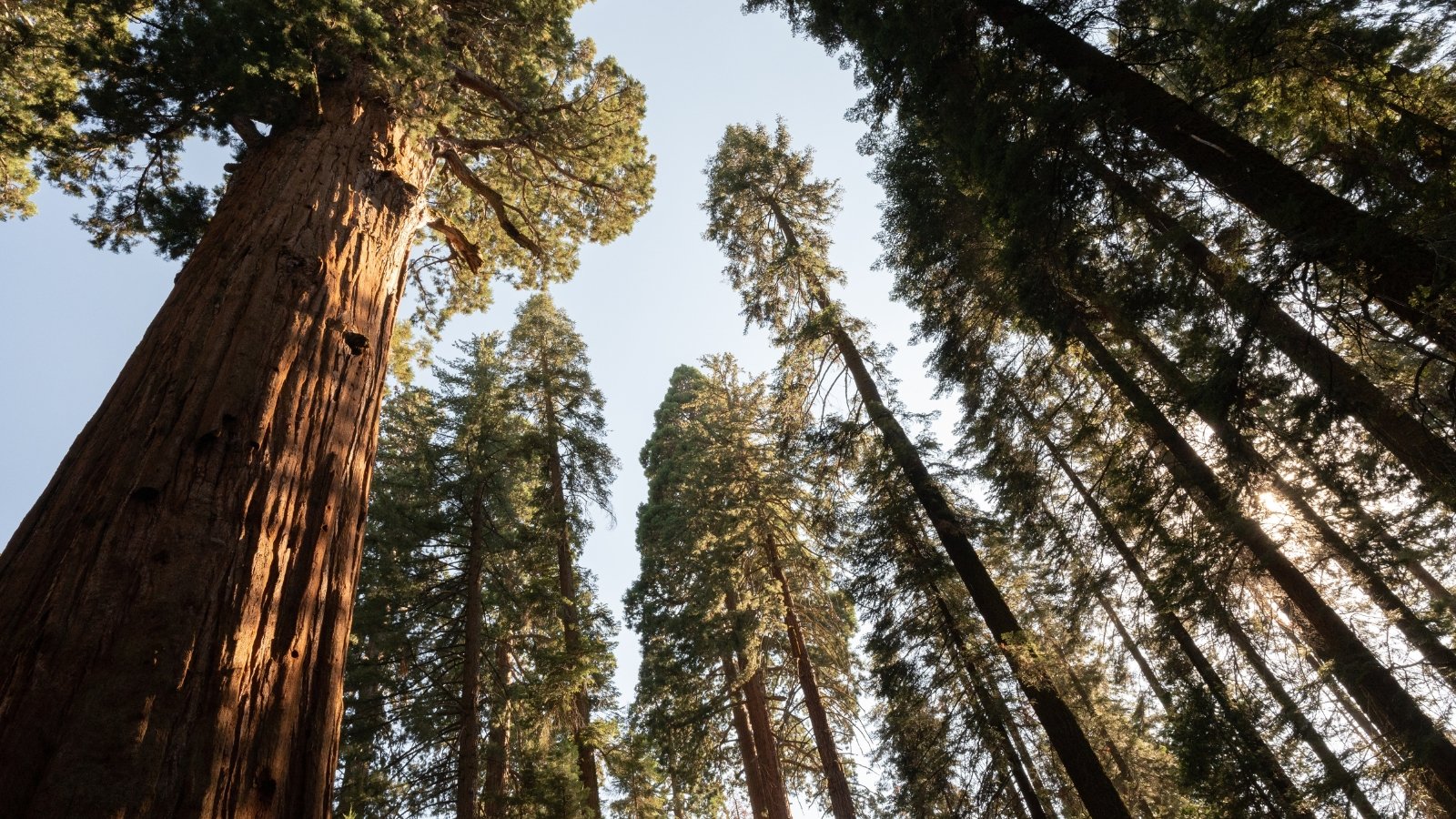
Coast Redwood (Sequoia sempervirens) is the tallest tree species in the world and Giant Sequoia (Sequoiadendron giganteum) is the largest tree by volume. Both are close relatives, both belonging to the Cupressaceae or Cypress family, and the subfamily Sequioidae.
These evergreen coniferous trees share many characteristics, including their iconic red bark, ancient origins, breathtaking height, and long lifespan for thousands of years. Both Coast Redwood and Giant Sequoia are native to California, but the Giant Sequoia grows in dryer, colder regions of the inland Sierra Nevada Mountains. If you want to grow a redwood in your landscape, it is very important to select the right species for your climate.
Here is a quick comparison:
| Coast Redwood | Giant Sequoia |
| Sequoia sempervirens | Sequoiadendron giganteum |
| Tallest trees in the world | Largest trees in the world |
| Grows exclusively in foggy coastal regions of PNW, within 50 miles of coastline | Grows in Sierra Nevada Mountains, better for inland climates |
| Require a lot of moisture | More tolerant of dry conditions |
| Not very cold or heat-tolerant, zones 7-9 | Withstands cold to zone 6 |
| Grow up to 400 feet | Grow up to 300 feet |
| Evergreen pinnately compound needles | Evergreen awl-shaped leaves |
| Cones about the size of large olive | Larger cones like a chicken egg |
Dawn Redwood
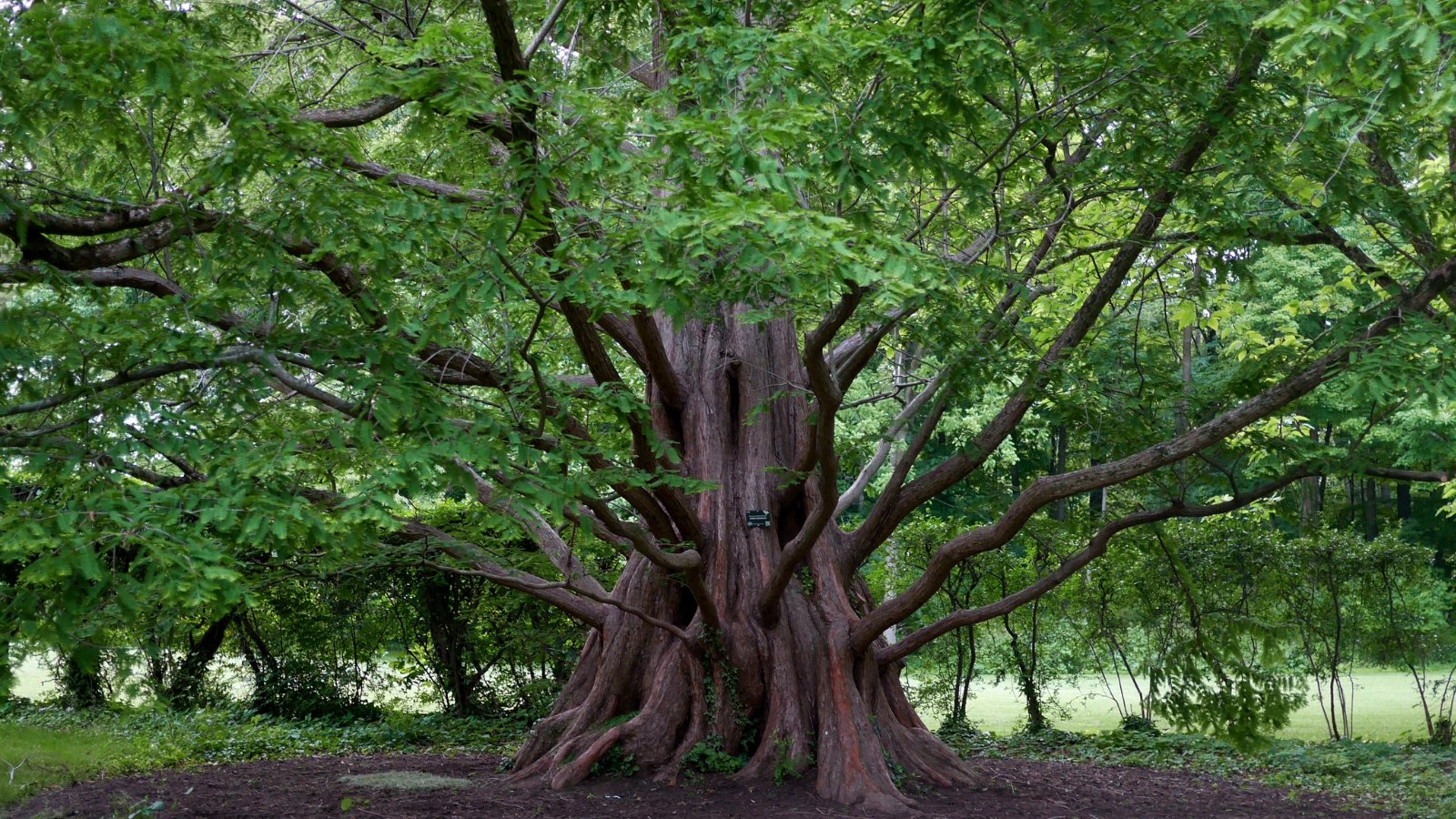
The Dawn Redwood (Metasequoia glyptostroboides) is a much smaller redwood cousin native to Central China. It was thought to be extinct for millions of years, but the tree was rediscovered in 1944 by a Chinese forester. This species is the most popular for ornamental landscaping.
Metasequoia glyptostroboides grows successfully around the world in harsher conditions than its coastal cousin can handle. This tree is ideal for cold climates, including Alaska, British Columbia, Washington, and Oregon. The trees are also great as specimen trees because they only need about 25 feet of spacing, compared to 40 feet or more required by the other species. However, they still require a lot of water and more acidic soil.
Companion Plants
Redwoods naturally grow with a few distinct comrades in large expanses of damp coastal northwest forests. Dripping moss and blankets of ferns are very common under the thick canopies. Only shade-tolerant, acid-loving plants can handle growing alongside these majestic red giants.
Sword Fern
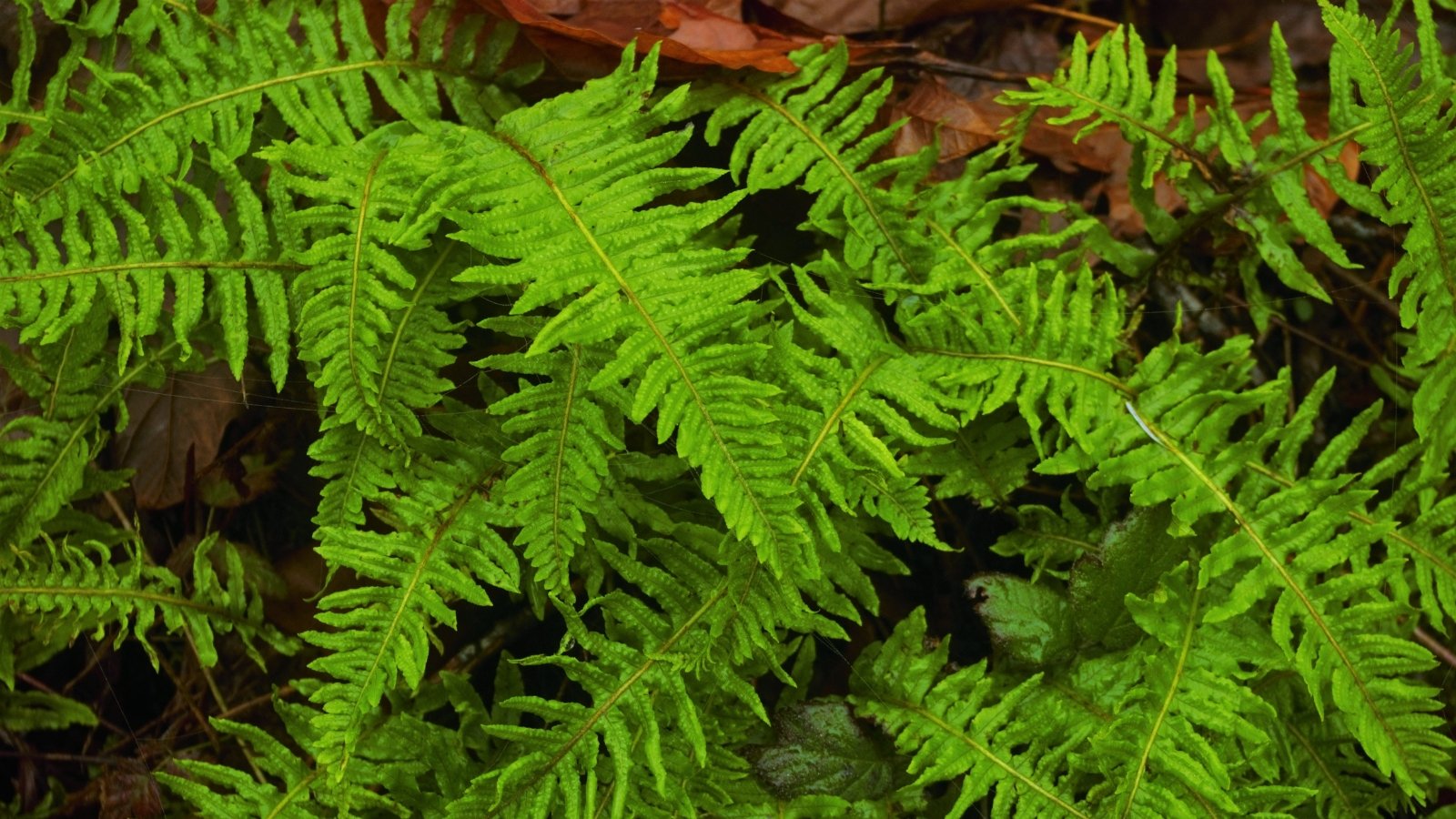
Native to Western U.S. forests, this native lacy fern is gorgeous and low-maintenance. They grow low to the ground and help conserve moisture in the soil. Sword ferns have likely grown underneath redwoods and other conifers for hundreds of thousands of years.
Plant them liberally under your redwood grove, ensuring at least six feet of space from the base of trees and two to four feet between each fern. Consistent moisture and partial to full shade are essential for this moisture-loving forest plant.
Rhododendron
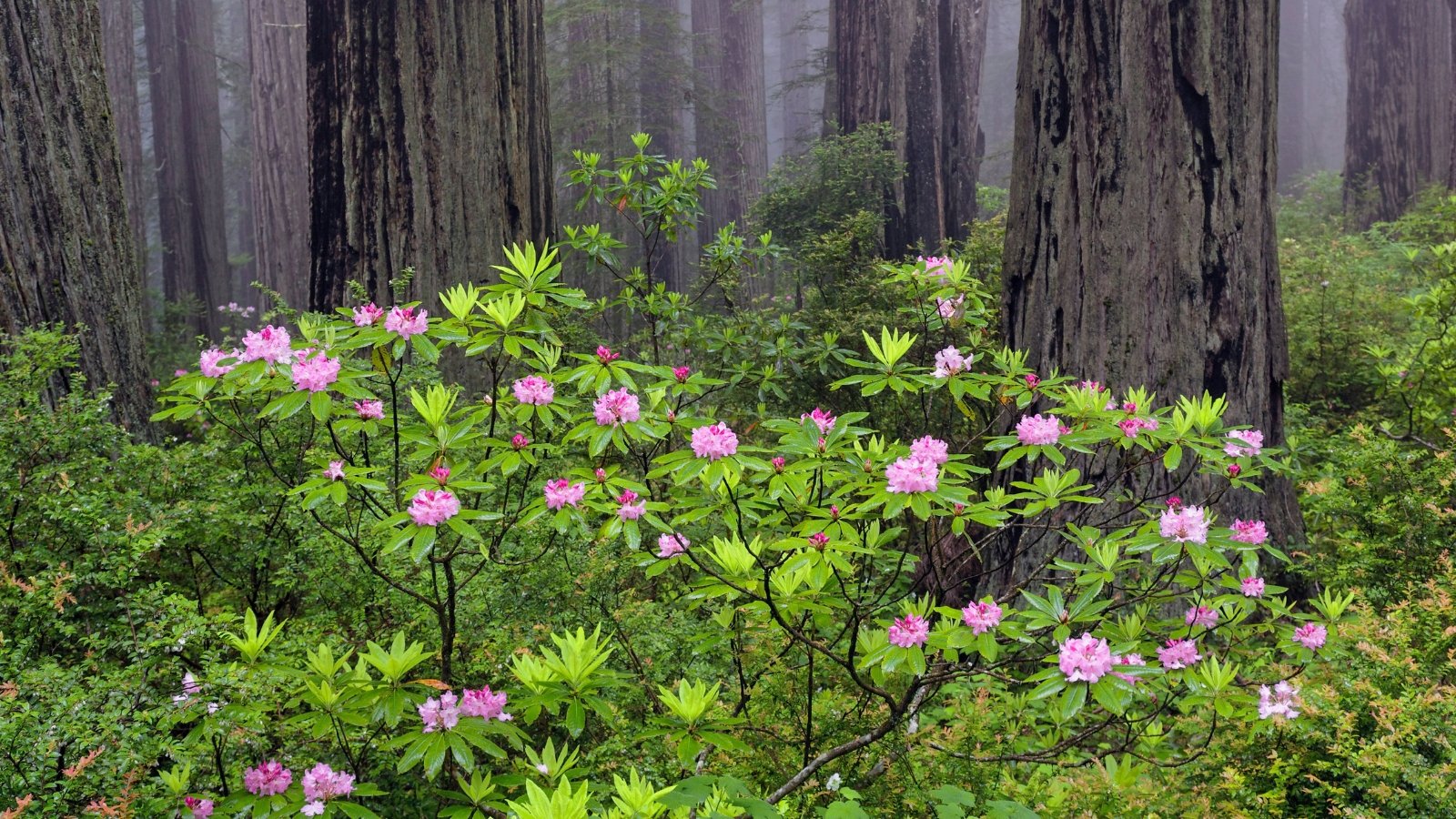
This popular ornamental shrub actually originates as a wild acid-loving understory shrub in coniferous forests. Rhododendrons grow wild in many parts of the Pacific Northwest, including among redwoods. For example, Big River State Park near Mendocino, California has an abundance of rhododendron shrubs or small trees that naturally thrive with Sequoias.
Create a lovely woodland shade garden by planting any variety of this acid-loving shrub within 6-10 feet from the base of each tree. Native rhododendron species are particularly desirable because they require little to no maintenance in your region.
Huckleberry
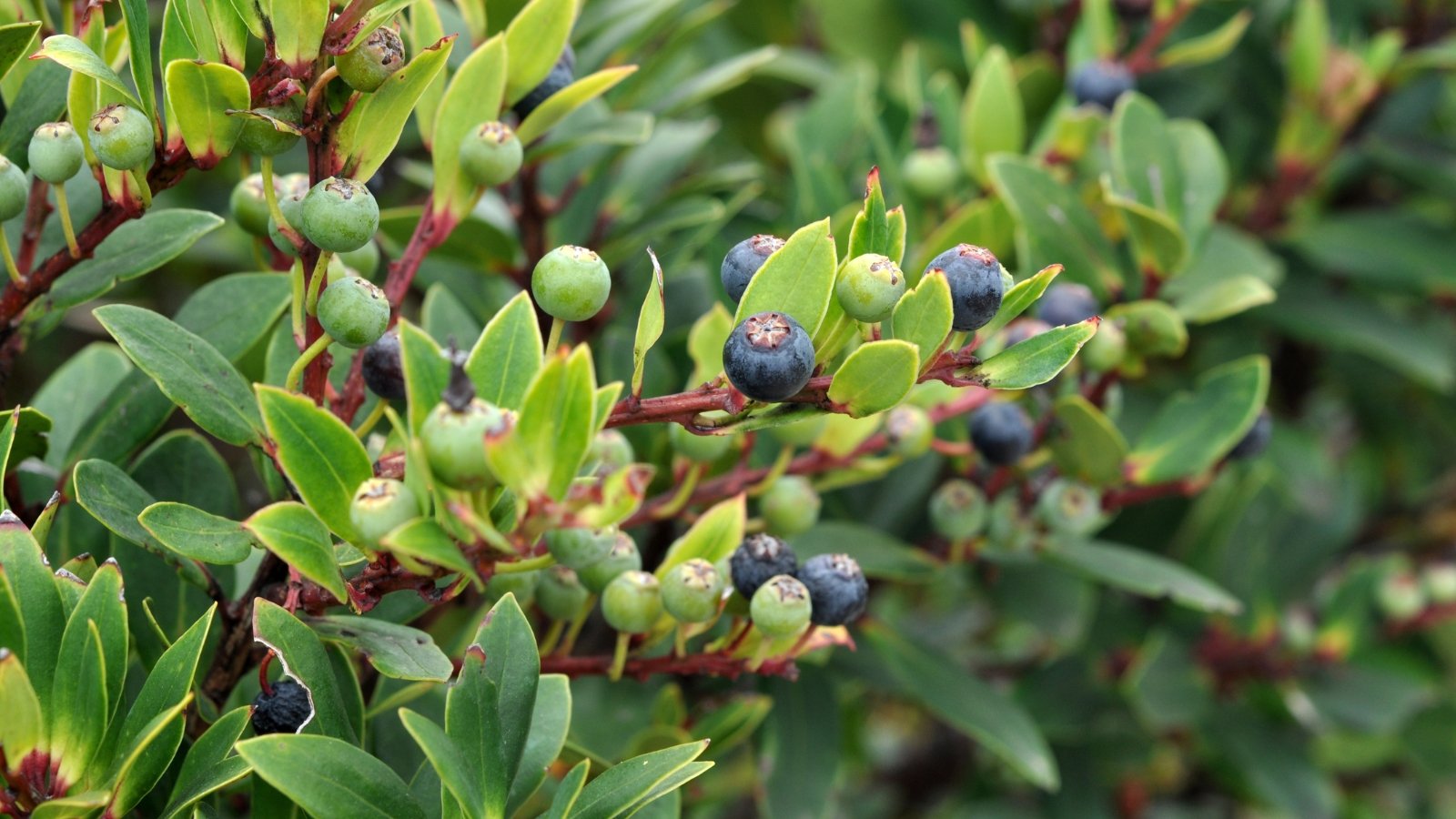
Also known as wild blueberries or Vaccinium spp., huckleberries dominate the understory of wild redwoods. These thick low-lying bushes are vital habitat for forest birds and provide an abundance of berries for wildlife.
The blueberry-like fruits are particularly attractive to humans, but are often overharvested in the wild. Why not grow your own patch of superbly delicious wild blueberries underneath your coniferous trees?
Redwood Sorrel
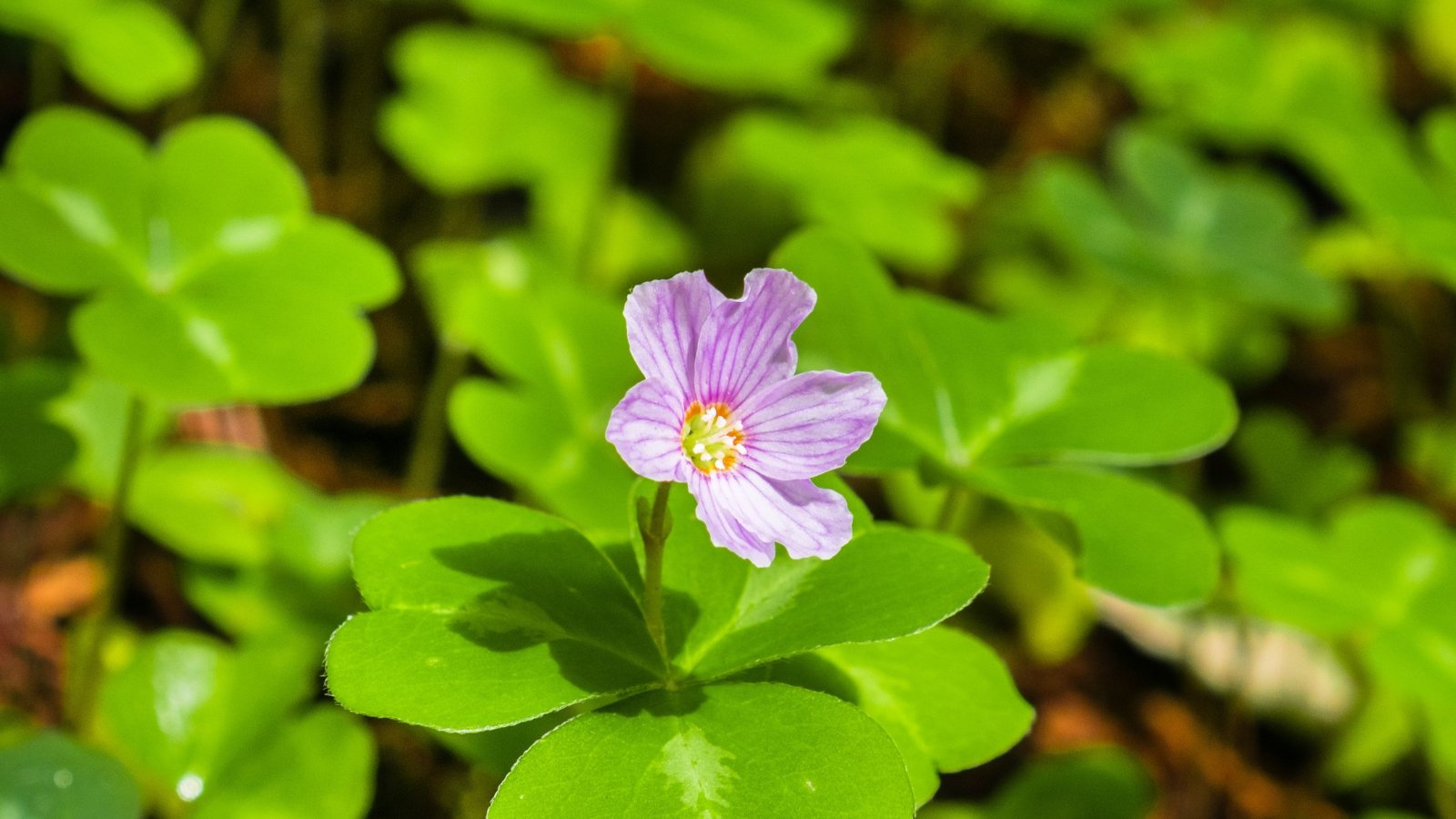
Also known as Oxalis oregana, this Pacific Northwest wood sorrel is the perfect ground cover for a redwood grove. The perennial herb grows just eight inches from the ground, producing clover-like leaves and pretty white flowers. Sorrel is one of my favorite tangy greens to wild-harvest in the spring.
Adapted to full shade, these plants are particularly adept at photosynthesizing in ultra low-light conditions. Keep them protected under the shade of your trees, as too much sunlight can damage the sensitive foliage. Enjoy the delicious leaves cooked or raw in small quantities.
Pests and Diseases
Redwoods are among the most resilient trees in the world. They have been on Earth for about 240 million years, since at least the age of the dinosaurs, surviving several mass extinctions. These trees naturally resist wildfires, insects, and fungi. The thick, reddish bark is a key part of the trees’ protection and insulation. However, occasionally these pests and diseases can take hold, especially if the bark of the tree is damaged or ripped.
Insects
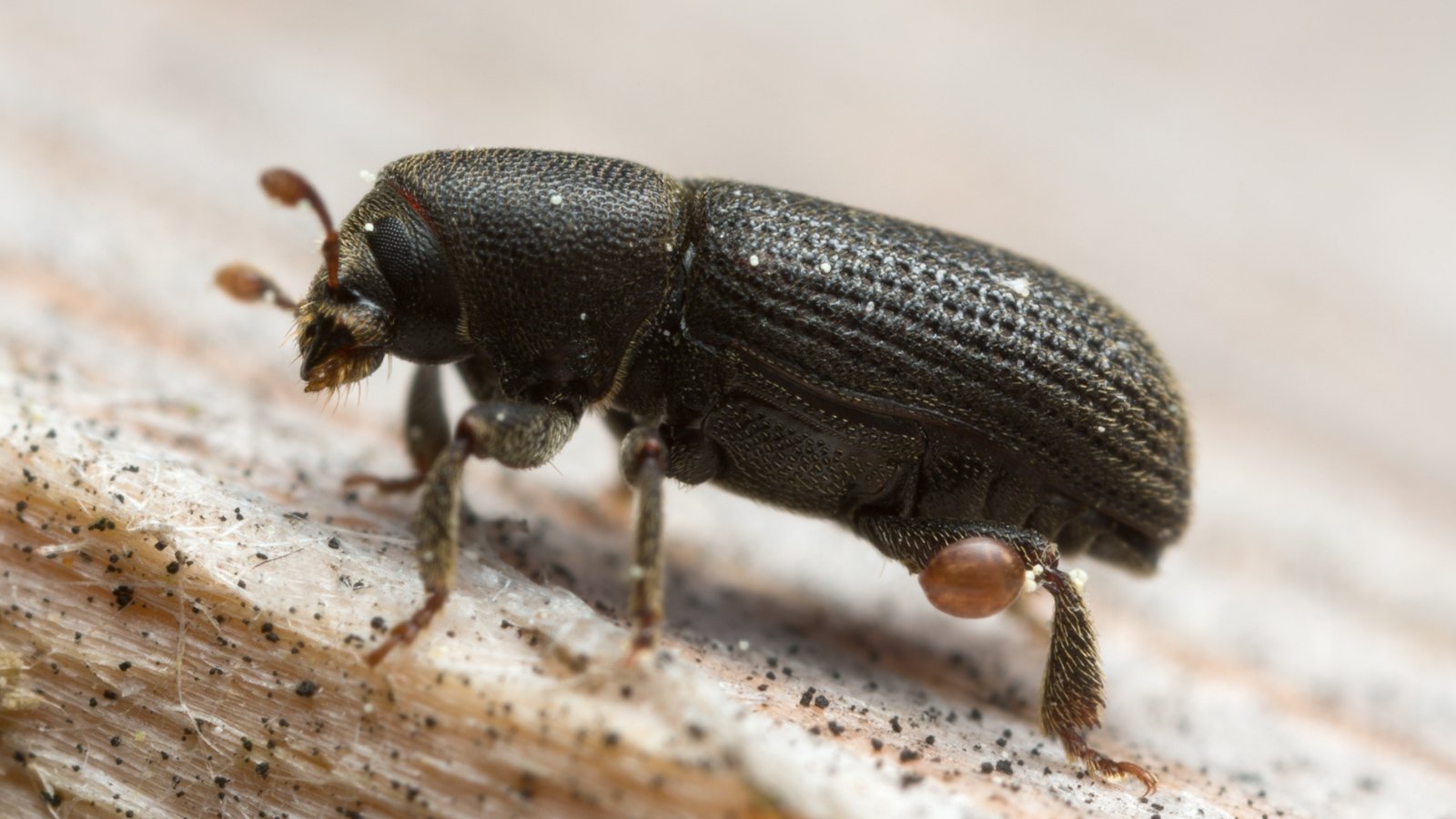
Spider mites, bark beetles, and redwood tip miners are the only major pests that attack redwoods. Still, they are unlikely to cause significant damage in mature trees unless the bark beetles infiltrate the trees while very young. Saplings may fall victim to insect feeding and require intervention.
You can use diluted neem oil or pruning to remove infested areas. In extreme infestations, it’s best to remove the entire tree to prevent transfer to neighboring trees. In the case of a large, established tree, call an arborist to assist with this.
Pathogens
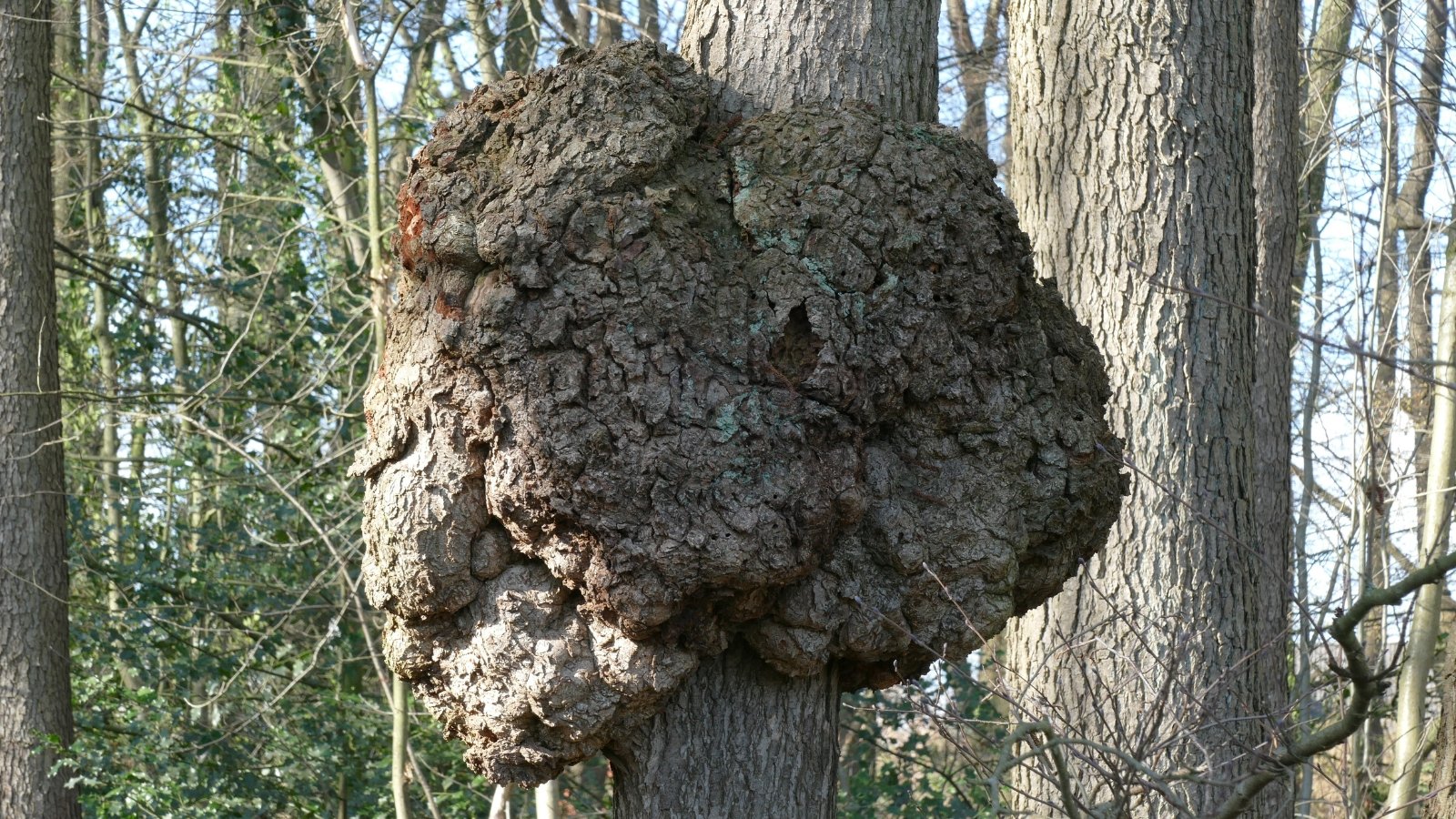
Root rot fungi and cankers are the most common pathogens to attack redwoods. They occur primarily in poorly drained or waterlogged soils. Root rot may cause overall yellowing or dieback of branches. You must improve the soil drainage, reduce watering, or transplant the sapling if possible. Cankers can appear as flattened, dead areas in the bark or along smaller branches. The best form of control is pruning away infected areas with sanitized tools.
Overcrowding, compacted soil, and soggy soils are the most common risk factors for these diseases. Prepare your soil properly and give your trees plenty of space to prevent problems.
Plant Uses
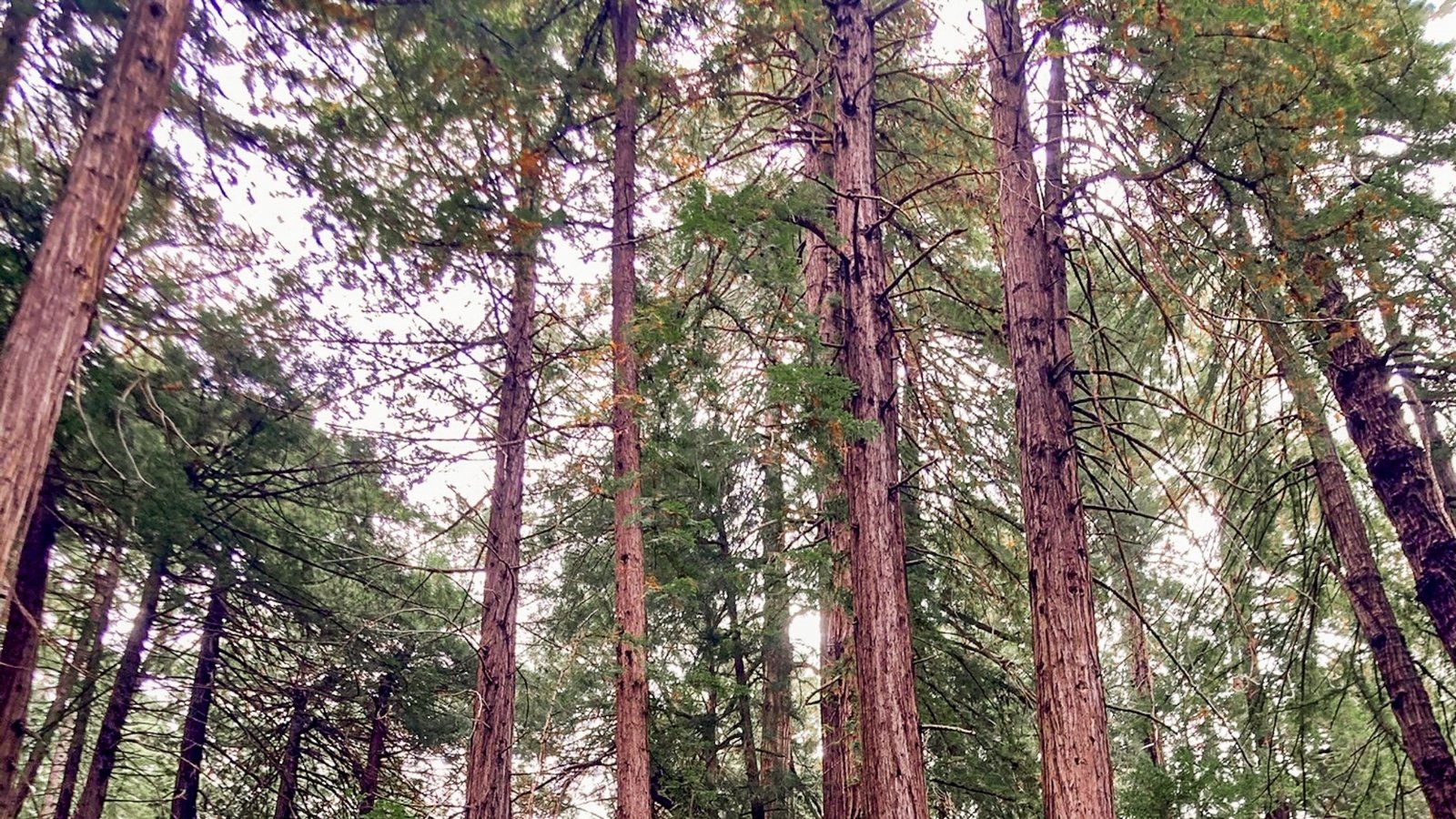
Coast Redwoods are an endangered species predominantly planted for native reforestation efforts. They make gorgeous ornamental specimens in a landscape as single shade trees or closely planted hedgerows. Redwood tips and needles are edible and tasty. The bark and wood were traditionally prized for building and lumber use but can be difficult to source sustainably.
Final Thoughts
If you live on the Central or Northern California coast or into Southern Oregon, you can grow Coast Redwoods in their native range. These trees require partial to full sunshine, consistent summer irrigation, and well-drained acidic soil. They appreciate fog, high humidity, and mild temperatures.
For gardeners in dryer, colder, or hotter regions, consider more adaptable species like Dawn Redwood or Giant Sequoia.
